How Much Does it Cost to Dock a Boat for a Year?
Before buying your first boat you probably want to know how much it will cost you each year. So did I, so I checked hundreds of slips, and here are the numbers I came up with.
How much does it cost to dock a boat for a year? An average sailboat costs between $800 - $1,800 per year. The price depends on location, season, and length of the boat. On average, a dock slip in the US costs anywhere between $12/ft per year to $240/ft per year, with an average of roughly $50/ft per year.
Renting a spot at a marina is called 'renting a slip' or 'renting a berth'. But there are other types of berths available as well, which can save you a lot of money.
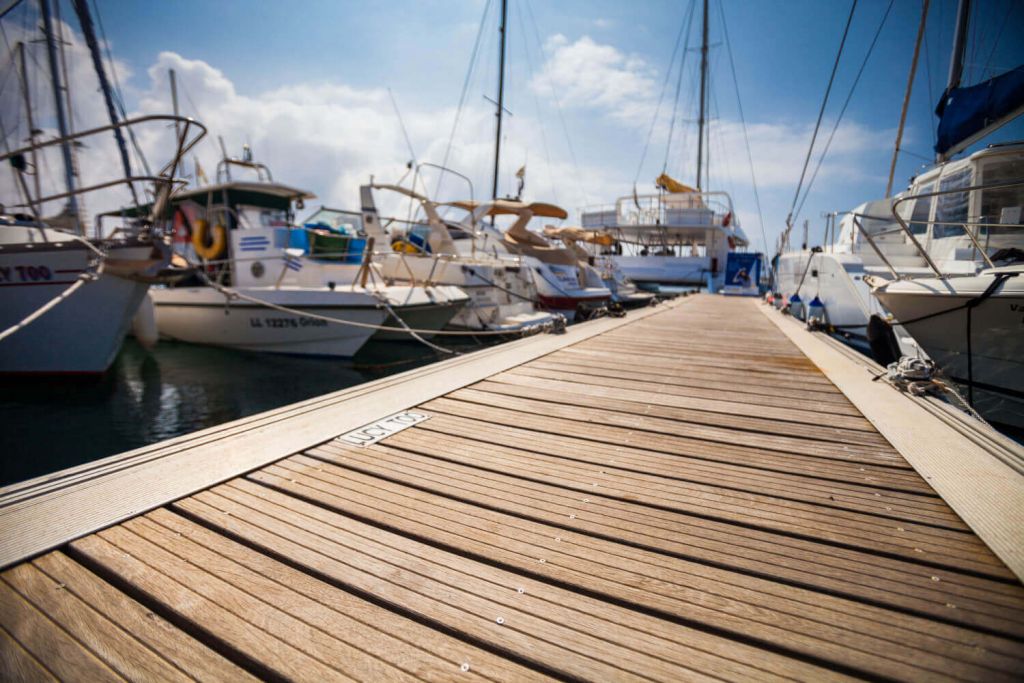

On this page:
Slip cost for different locations (usa), slip costs in other locations, things to consider when picking a mooring, types of berths, related questions.
In this article, I'm talking about the cost of annual/seasonal slips. Marinas give you a discount on year-round slips. So these prices are only applicable if you get yourself a permanent spot.
All prices are based on boats with a length between 24' - 72' (7.5 - 22 m) since that is what most people have.
The average slip cost in different U.S. locations:
- Regular docking slips in the US range from $12 - $50/ft per year.
- Prime locations in the US cost between $120/ft per year to $240/ft per year.
- One of the most expensive marinas is Marina del Rey, which can cost from $192 - $384/ft per year.
- Canada is cheaper, with a prime Toronto dock location running at $102/ft per year.
- Transient moorings in the US seem to average at about $20 - $45 per night, regardless of length.
- Annual mooring rates seem to average at about $80 - $250 per year, regardless of length.
Regular docking slips are simple berths in small marinas. Their location is remote, in small towns along the entire coastline. Most of these marinas don't have premium services and don't provide access to popular sailing waters.
Prime locations are larger cities and bays, like San Fransisco Bay, Los Angeles, Florida, or San Diego. These marinas offer lots of premium services and provide access to the most popular coastal sailing waters.
Some popular marinas have long waiting lists, and they want you to give a waiting list deposit. Marina del Rey charges about $150.
Also, add another $25-50 deposit for your security key and car parking card.
Catamarans are up to 20% more expensive to dock (because they take up more space).
Renting a mooring in low season can be up to 70% cheaper. Not all marinas have high and low seasons, but many in the Meds do, for example. But they're cheap for a reason: sailing just isn't as great that time of year there.
So the cost depends on the type of spot you plan to rent. In some situations it makes sense to rent a simple anchorage, and buy a small boat to get there, saving you money on marina fees. As you can see below, a cheap anchorage saves you a lot of money, and if you're in a more expensive location, you could easily earn back the cost of a new dinghy within 1-2 years.
How much does it cost to own a sailboat? Read our complete sailboat ownership cost guide for a complete overview of all the ownership costs and the purchase cost of a new & used sailboat.
- Slip costs in the Mediterranean are on average higher since it is a very popular and crowded area.
- Slip costs in the UK are on average slightly higher.
- Greece annual fees are between $75 - $175/ft per year
- Croatia annual fees are between $160 - $350/ft per year
- Italy annual fees are between $100 - $440/ft per year, averaging at $4,500 for a 32' yacht.
- France annual fees are between $50 - $450/ft per year, averaging at $4,500 for a 32' yacht.
The Mediterranean can be a lot more expensive because of how popular it is. Especially the French and Italian Rivieras and Croatia are expensive areas.
The more you go east, the cheaper it gets (apart from Croatia, which is getting high on its own supply I guess).
However, some countries, like Greece for example, have a lot of anchorages and cheap or free moorings. Not a lot of marinas there. So if you plan on going there on holiday, you should be okay.
The world's most expensive marinas are in Monaco: a slip there costs you anywhere between $9,000 - $43,500 per month. Wait, it gets even crazier: during the Grand Prix, rates increase to $17,750 - $100,000 per month!
- Travel time: how long are you willing to travel each time you want to take her out? Location makes all the difference in price.
- Docking or mooring? If you like peace and privacy, perhaps an anchorage or water mooring is the best way to go.
- Accessibility: is the mooring always accessible or just at certain times of the tide? The latter can reduce your costs a lot.
- Some marinas are owned by yacht clubs and require you to become a member. That can become quite expensive quickly.
There are different types of berths available. If you don't know the difference between mooring and docking it can get quite confusing quickly.
Mooring is a permanent anchor spot on the water. Your boat is attached to a single point on the seafloor, using an anchor (or anchors) that are fixed to the seafloor or a buoy. So you leave the anchors behind when you leave. You have no direct connection to the land, so you have to use a dinghy or other small boat to get to your sailboat.
An anchorage is simply a designated place for boats to anchor, using their own anchors and nothing more. Here you also don't have access to land.
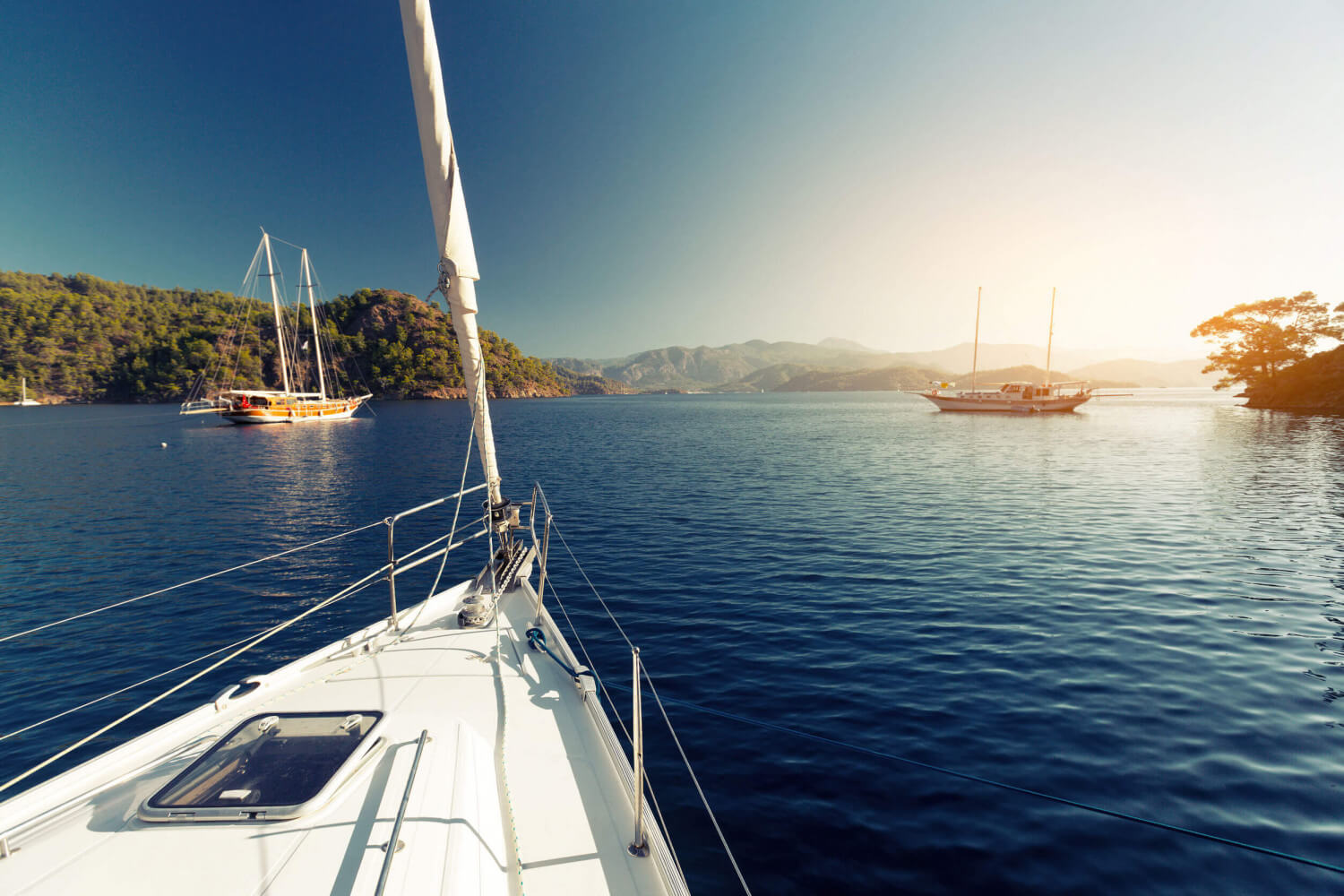
Docking is tying up your boat to an allocated spot on the shore, allowing you access to land. With docking, you don't use any anchors, but instead, you use lines and fenders.
You dock at a marina , which has berths or slips. A berth is the designated spot for your boat. So it's sort of the parking space for your boat.
Permanent mooring is a slip reserved for you for the entire season. Transient mooring is rented on a per-day basis and is more expensive.
The difference between mooring and docking is the location of the anchorage; a mooring is offshore and docking is directly next to shore and gives you access to land.
What's the difference between mooring and anchoring? The difference between a mooring and an anchorage is the means of anchoring. A mooring uses anchors available at the location. An anchorage doesn't have any infrastructure; you need to use your own anchors.
Liveaboard slips
Liveaboard slips are more expensive - A LOT. Some marinas charge a flat fee on top of the rent (anywhere up from $350). Others just double or quadruple the rent of the slip.
For most marinas, the number of liveaboard slips is very small, and waiting lists may vary anywhere between 3-7 years.
What's it like to live on a sailboat? Interested in moving onto a sailboat, but unsure whether it's for you? William has written a great article on 5 Things to Consider Before Moving onto a Sailboat .
Advantages of Annual Slips
You can either reserve a slip for an entire season, or make use of transient slips , which just means you rent per day, week, or month, and not per year. This gives you the freedom to hop from marina to marina, which is great if you are on holiday, or living aboard, but it can get quite expensive.
Generally, it is about 3-4 times more expensive to use transient slips.
So, if you plan on sticking around a particular area, reserving a slip is your best option. If you want a prime location, you have to place your reservation in time. Permanent slips tend to be popular and you may end up on a multi-year waiting list.
Premium services
Some slips have winterization included in the price. This means the marina will haul out your boat at the end of the season, clean it, and store it (probably on a rack or trailer). You can also do this yourself and save a lot of money. Winterizing a boat can be done for a couple hundred bucks yourself. Expensive marinas can easily charge up to $2,000 for this service.
Other premium services are security, pilotage, docking assistance (allowing you to short-hand a larger yacht), shops and cafes, maintenance, gas station, and so on.
Buying a Slip
If you want to be done with it, you could also simply purchase a slip. Some marinas have a sublease system, so the marina doesn't own the slip, but another owner does. This means there are plenty of slips for sale. I can't really give you a number, because the price depends on so many variables, and also just the reason that the owner is getting rid of it.
But it can be interesting if you plan on having a boat a long time, and have some money at hand.
How much does it cost to maintain a small yacht? A good rule of thumb is 10% of the original sales price. Most small and mid-sized yachts will cost you about $2,000 - $4,000 to maintain, and an additional $1,000 - $2,000 to winterize. Cleaning can add another $500. This gives a total maintenance cost of roughly $5,000 per year.
How much does a small dinghy cost? A small dinghy costs about $4,500 new. Second-hand, they can be had for a couple of hundred dollars and up. A small inflatable boat can cost you anywhere from $200 - $3000. This is the cost without an engine.
Stephen Serio
Hi Shawn, Thank you for the comprehensive info. It is really useful to someone like myself trying to decide, whether, or not, to live on the water. Cheers mate, Steve.
Awesome website! It really comes handy to have where to go for information written for landlubbers with pirate dreams.
Currently, I am considering to buy a little sailboat in the Netherlands (where I live) and all sort of questions about expenses, maintenance, insurance, licenses… keep rising. For example:
Is marktplaats a place to find a boat?
Will I have to become a handywoman?
Is there a boat that is small (25-28ft), cheap and, that I can stand inside (177cm)?
So many questions, too many boats on this range (Friendship, Contest, Victoire, Wibo, etc…) and very little information in the forums…
I see that you focus the articles about running costs mainly for the American audience and I wonder if you also write articles for this nature for the Netherlands?
Do you have any Dutch focus articles (best marinas, cost of docking, winter care costs)?
Chris Krajewski
You forgot to add that the anchorages all over the World are for free, except USA and Canada
Great article! The key word here is “Variable”. The price always depends on location, safety and amenitites. i have a 45’ slip for sale near the Chesapeake Bay in a very desireable marina. It’s less than half the price of one in Florida. Thanks for all the notes.
Walter Edward Hertzenberg
I want to relocate to North Ft. Meyers. I want a boat to live-aboard and will keep it docked 95 percent of the time. Are their any marinas that are not premium marinas?
Dean Phillips
I just had a conversation last Friday with my uncle when he came over for dinner on boat parking spaces. He is going away for a bit and is looking for a space to park his boat in the time he’s away. I offered my help to look into it as well and that’s where I came across your very helpful post. My favorite part has to be where you explained that if you like peace and privacy, perhaps an anchorage or water mooring is the best way to go. You make a very good point here, which I’m sure those interested in this will be happy to keep in mind. I’ll be sure to share this with my uncle later, thank you!
What about dry docks in the NE of USA? It seems hard to find them, let alone how much they cost for a 50-60ft sailboat.
Lloyd Bronson
I am grateful you mentioned that mooring is a permanent spot on the water for a boat. My uncle is interested in hiring extraction services, but is unsure of what all of the terminology means. I’ll send your article to him to help him get familiarized. https://www.gpmarine.com.au/moorings/
Great article! Thanks for writing it.
Are shore powers and fresh water included in these fees, or are those additional charges?
Verona Fifer
Hello improvesailing.com owner, Your posts are always informative and well-explained.
Thao Valencia
To the improvesailing.com administrator, Thanks for the well-researched and well-written post!
Abbey Greenfield
Hello improvesailing.com owner, Great post!
Leave a comment
You may also like, how to live on a sailboat: consider these 5 things.
"Someday I want to move onto a sailboat and sail off into the sunset...” It's a common dream shared by thousands, even millions of sailors and non-sailors …

How Much Sailboats Cost On Average (380+ Prices Compared)

How To Live On a Boat For Free: How I'd Do It
Own your first boat within a year on any budget.
A sailboat doesn't have to be expensive if you know what you're doing. If you want to learn how to make your sailing dream reality within a year, leave your email and I'll send you free updates . I don't like spam - I will only send helpful content.
Ready to Own Your First Boat?
Just tell us the best email address to send your tips to:

Docking and Mooring Fees in the World

Mooring fees meaning
One of the things you’ll have to pay for during your charter or sailing holiday is mooring fees or berthing fees.
What is a mooring fee? A Mooring Fee represents a time based charge applied to all vessels for staying in a marina or harbour overnight, and connecting to their facilities such as electricity or using their water supplies, toilet facilities, ropes and pontoons.
How Much Does It Cost to Dock a Boat?
How much does it cost to dock a boat in a marina? The answer is: it depends. It depends on different factors such as the place you want to dock. Mooring fees depend also on the type of vessel you have and how much time you want to dock. We are going to clarify these aspects and give you a quick overview of how much you have to pay for docking.
To dock a boat, you need an allotted place where you can secure it. This place can be found on a pier and it is called a slip (in USA) or a berth (in Europe). Berthing or mooring a boat allows you to easily embark and disembark. Slips or berths can be found on different types of piers: main piers, finger piers or floating piers.
How much does it cost to keep a boat in a marina? The Mediterranean can be expensive because of how popular it is. The French, Italian Rivieras and Croatia are the most expensive areas.
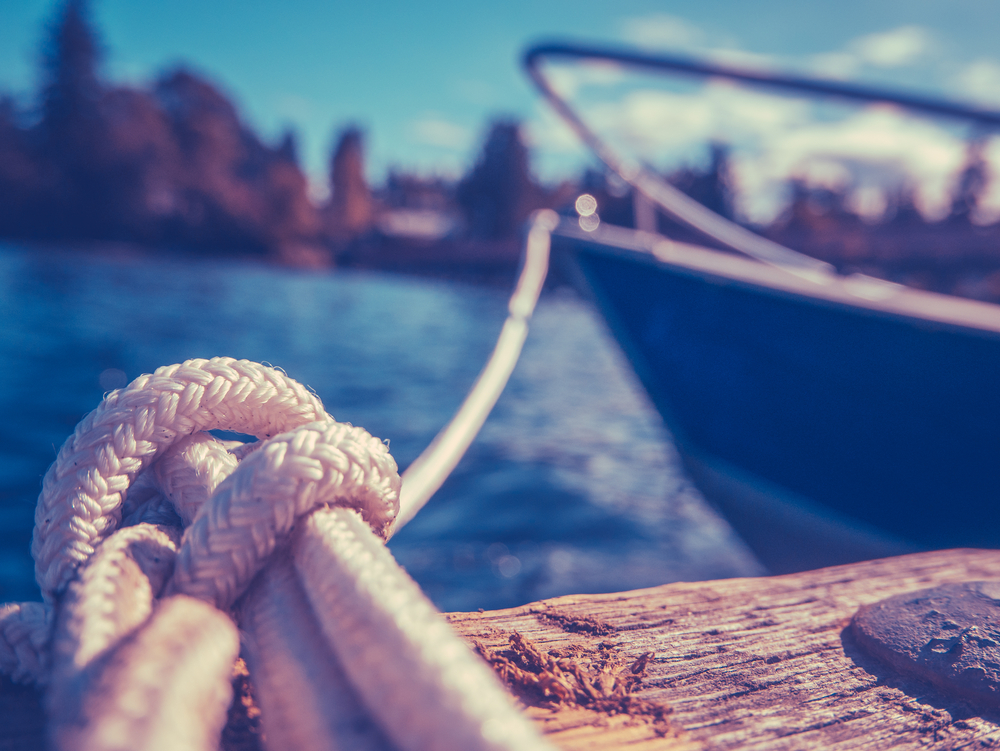
Mooring Fees
Mooring fees in the mediterranean.
Mooring fees vary a lot in the Mediterranean based on the location you choose and the time of the year you travel. The peak season is the most expensive period and it ranges from July to the beginning of September. Besides the season, the length of the boat is a factor that will always influence docking fees for boats. If you rent a docking place for the whole season or for the whole year, you will get discounts.
The busiest period in the Med is between June and the end of September – the summer season.
Southern Europe is generally expensive because the Mediterranean is one of the most popular sailing destinations. Moreover, in the high season, most locations are crowded with tourists and so are the marinas where you can rent a slip or a berth.
The western countries such as France, Italy, Spain are more expensive than Greece for example. The annual mooring costs in France vary between €135 and €1350 / m per year (€45 to €450 per ft), the most expensive port being Old Port of Saint Tropez, which is double in price compared to Port of Cannes.
The prices in Italy range between €285 – €1350 / m per year (€95 to €450 per ft).
The mooring fees in Croatia are substantially higher than in Greece. In Croatia, yacht berthing or mooring fees range between €435 – €1050 / m per year (€145 to €350 per ft.) for a high season contract.
Greece annual fees are between €225 – €525 / m per year (€75 to €175 per ft.).
Monaco is one of the most expensive destinations. A berth in Monaco costs about €1500/ m per year .
Check below the most expensive marina mooring fees in the following popular Mediterranean destinations for a 10 m boat . Some of them (Marina Capri, Port of Saint Tropez, Port Hercule, Ibiza Magna) are the most expensive marinas in Europe .
So, these are the marinas with the highest mooring fees for each country .
Mooring Fees in USA
In the USA, mooring and slip costs for regular docks vary between 12$ to 50$/ft per year. Popular locations such as Los Angeles, or Florida have higher yearly rates which start from 120$/ft and may reach up to 240$/ft. For transient mooring, the docking fees are not calculated based on the boat’s length and are 30$ on average.
Things to Consider When Picking a Mooring
When picking a mooring, there are different aspects you should take into account:
– the time of the year you want to go on holidays as prices vary accordingly
– the time of the day when your docking place is available based on the tide
– how much intimacy you want: a water mooring or anchorage enables you to enjoy the sea and the surroundings, on the other hand, a slip in a marina grants you access to many facilities
– each marina’s policy; some only allow you to dock if you pay a membership fee.
Types of Berths
Some of the basic terms you will hear in the nautical field are mooring, docking, anchorage and berth. They all refer to the same act of securing your boat in a fixed place, but let’s see the differences.
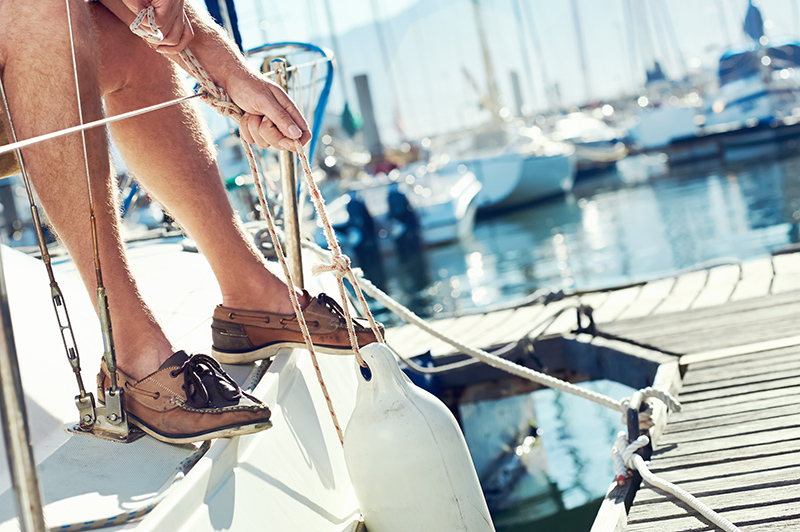
When you moor your boat, you can use an anchor to secure it against the seafloor or buoy. A mooring is a permanent place where you do this. This method allows you to keep your boat steady in one place but doesn’t enable you to access the land directly. To do this, you’ll need a dinghy.
Anchorages are places where boats may drop their anchors. Just like moorings, they don’t provide direct access to the land. but they don’t provide a permanent anchorage point either. Each boat uses its own anchor. Check out the best boat anchors .
Docking ensures direct access to the land. When you dock, you secure your boat to a fixed spot on the land. To dock, you need docking lines. The designated place where you secure your boat in a dock is a slip or berth. By analogy, docking a boat into a slip is like parking a car in a car parking.
Permanent mooring and transient mooring
If you book a docking place for the entire season, you get permanent mooring. If you book a berth per day, you get transient mooring. As you now know, there are different methods of keeping your boat steady in the water. With a little bit of practice, in no time you will be able to make the difference between mooring, docking and berthing and to maneuver your boat according to each scenario.
Berths are probably the best option if you want the maximum degree of safety and comfort. In a marina or harbour, you can find berths for any exigencies and people who are ready to assist you while mooring.
Advantages of Annual Berths
Annual berths mean that you pay an annual fee to dock your boat. The advantage is that you will pay 3 to 4 times less than you would if you rented a berth per day. Depending on the type of vacation you are planning, you might want to opt for an annual berth or not. If you plan on spending the whole time in one place, this is the best and cheapest option. Nonetheless, if you want to sail from place to place, the costs of turning back to the same docking place might be too high. In this case, transient mooring is the only choice.
Premium services
Premium services are available at different marinas. Some examples of such services are maintenance, repairs, fuel station, on-site cafés/restaurants, laundry service, Tv, Wi-Fi, wintering storage etc. If you opt for the latter, the marina will take care of your boat in the cold season, by pulling it out of the water, cleaning and storing it.
The more services are included in a marina’s ‘menu’, the higher its rates will be. However, docking at a well-provide marina might cover all your needs during your holiday
Buying a Berth
Yes, it is possible. If you want to make a berth yours, you can buy it. Not all marinas provide this opportunity, but many do. The prices vary of course based on the location of the marina and the services it provides. Buying a berth can tackle forever the problem of keeping your boat safe. Then again, this might only be an option if you like to spend a lot of time in the same area.
If you want to reduce your docking costs so that you can spend more time at sea, go in the off-season. In this period, mooring fees are up to 70% lower.
In case you own a catamaran, note that these boats may be even 20% more expensive when it comes to docking. This is due to their larger size.
Many marinas offer additional services except for the basic package: slip, water, electricity. Of course, all the additional facilities imply extra costs. In many marinas, you are also asked to pay a deposit. Also, it’s important to note that availability in the peak season is problematic especially in the Mediterranean. Therefore, you should book a berth in time to make sure your place is secured.
Docking and mooring fees are something you must definitely consider before buying a boat because together with it come more responsibilities. There are plenty other details to discuss regarding mooring costs. But it’s easier to contact us directly once you chose the location you want to sail to. Based on it, we will offer you customized advice.
Leave a Comment Cancel Reply
Your email address will not be published. Required fields are marked *

Boating Basics Online is reader-supported. When you buy via our links, we may earn a commission at no cost to you. Learn more
How Much Does It Cost to Dock a Boat? – The Average Cost
Written by J. Harvey / Fact checked by S. Numbers
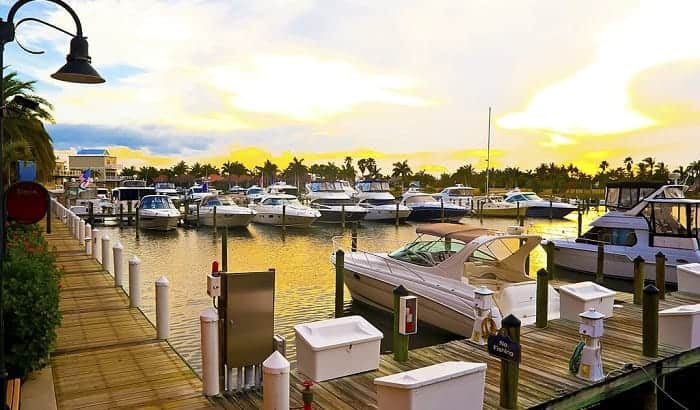
If you’re buying your first ever boat, one of the questions you may have in mind is, How much does it cost to dock a boat? It is one of the vital things for boat owners, as they need a place to keep their crafts safe and secured.
When docking at the right place, you can also comfortably and conveniently step aboard. But all these benefits come with a price tag. The yearly cost of docking for regular sailboats starts from $800 to $1 800.
A dock slip can cost from $12 to $240 per foot every year. The average is around $50. Docking fees for boats vary due to their length, location, and season. Learn more of the crucial details by reading this article.
Table of Contents
1. Regular docking slips
2. prime-location docking slips, 3. mooring vs anchoring, 1. availability, 2. security, 3. wet slip or dry slip, 4. minimum length, 5. the condition of the marina, 6. work policy, 1. electric, 3. pump-out fee, 5. membership fee, final words, how much does it cost to dock a boat – the cost of renting a boat slip.
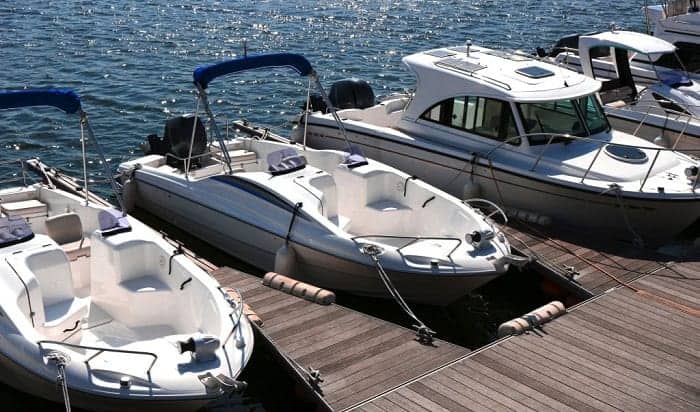
Just like everything else, the charge of boat slip depends on supply and demand. An increase in the price happens due to some situations.Usually, waterfront real estate is high-priced.
This estate does not only develop into marines and docks. They have another potential to be turned into a more profitable establishment. Some of these estates may not be ideal for docking in regards to local ordinances and ecological sensitivity.
There’s a hike in the cost of boat slips when the number of boaters increased. With these factors, the following details will be more specific. So, jot them down as notes and pay close attention.
These are simple berths found in marinas, situated in remote places like the coastline of small towns. Affordability is what makes these areas attractive.
However, they don’t offer easy access to popular sailing waters, unlike premium areas. The boat slip rental cost per hour can be $2 to $3. This is preferred by those who only drop by and do not stay for a long time.
Overnight stay can be from $4 to $6. You may also avail of this service monthly for $20 to $25 per foot, and annually for $23 or $24 per foot.
The charges vary depending on amenities, reservation time, and location. Electricity, dock box, freshwater, and tenant lounges are some of the things you can find in a boat slip.
The charge associated with regular docking slip multiplies when it comes to prime-location docking slip. It ranges from $120 to $240 per foot for yearly cost. Some areas even have a rate of $192 to $384.
The nightly rate for transient moorings starts at $20 and goes up to $45. The average boat slip cost is around $80 to $250 annually for any length of the boat. Vessels are usually from 24 feet to 72 feet. Here’s a chart that does the math for you:
Apart from docking costs, expected extra charges in prime-location dock slips. Due to popularity, a marina’s price multiplies because of these charges. When you put yourself on a waiting list, you have to pay a $150 deposit to be in the queue.
You will need another $25 or $50 for a car parking card and security key. You should know that catamarans take up a lot of space. Thus, they charge an extra 20%.
As you can see, it all depends on the spot that you’ve chosen to rent. You may also buy a small boat to avoid paying a high cost for docking. Some small vessels will be fine with simple anchorage, which can be affordable even in a popular location.
There’s a time of the year that you can save some money when mooring. It’s the low season, and you can enjoy as much as a 70% discount. However, not all locations have this offer every year.
What Are The Types Of Berth?
In this part, we will talk about the differences between mooring and docking as well as the types of the berth.
It refers to the permanent spot of the vessel in the water. The anchor that you use to pin your boat in a certain location is linked to a single section on the seafloor. It means that the anchor stays behind when you leave.
There’s no direct connection to the land. So, this setup requires a small boat like a dinghy to get on your sailboat. On the other hand, an anchorage is a place where you anchor a vessel using your anchor, and you can’t access the land.
To relieve you from the hassle of walking back and forth when retrieving and deploying your anchor, you can get the MinnKota Deckhand Remote Switch. It can be installed with ease and use with no trouble because of its plug-and-play design.
When you tie your boat on an assigned spot at the shore, it’s called docking . Anchors are not required and what you need are fenders and lines. This is done on a marina with slips or berths. Simply, you can call it a parking space for your boats.
There are good fenders that you can find like Taylor Made Super Gard Fender, SWELL Big Bumper Ball, Taylor Made Freeboard Fender, and X-Haibei Boat Fenders.
Transient mooring means daily rent, and if you sum it up, it’s more expensive than permanent mooring, which is the reservation of slips for the entire season.
Mooring and anchoring differ in the anchorage’s location. The former is always offshore while the latter is beside the shore, which makes land accessible.
What sets each of them apart is the means of anchoring. Mooring uses the anchor provided in the location. In the case of anchoring, infrastructure is not present. You’ll have to use your anchor.
Considerations When Choosing A Slip For Docking A Boat
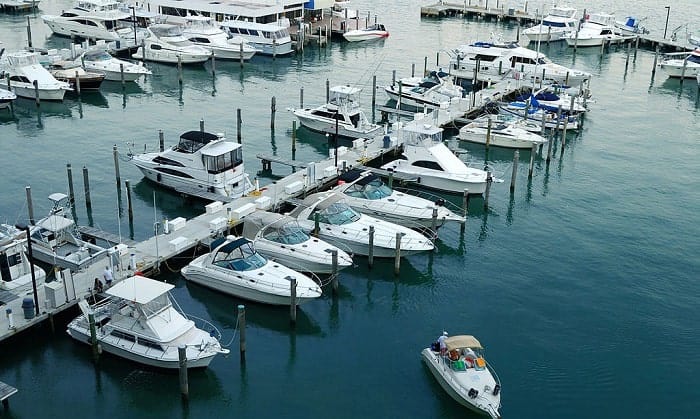
Choosing a marina or slip for docking is not as easy as you may think. Most marinas are known for their versatility in providing service, but dockage fees vary dramatically according to your choice.
Here are some considerations before deciding which slip you’ll take.
This is the fundamental thing you have to look at when hiring a service. You may need to arrange to be on the waiting list for popular marinas for peak season. Foresee shortage of slips as it can always happen.
The boats should be secured while at the slip. Marinas know this concern, and they’ve already prepared for it. Thus, controlled access to the docks and security guards should be present.
Wet slip is the main topic in this article. It’s how every boater can take their vessels in and out of the slip. Compared to dry slip, it costs higher. If you don’t use your boat regularly, dry slip is fine.
Efficiently renting out their spaces is the goal of marinas. A boat that is too small to occupy a slip; may not be desirable for marina owners. They would think it’s just a waste of money.
It’s the reason why the minimum length for boats is imposed. You’ll end up paying the entire slip even though your boat doesn’t use up the whole space. For instance, you’re obliged to pay the charge for a 20-foot boat slip despite having a smaller craft.
Be resourceful and ask around about the prevalent condition of the marina that you’re eyeing to dock your boat. Strong currents, large tidal waves, and exposure to the dock are some of the things you want to know.
Some marinas don’t allow outsiders to conduct professional service. They may have a list of recognized professionals who can make repairs and maintenance on your boat while being docked in their properties.
Other Charges
It can either be metered or with a flat fee. You may pay $10 to $50 per day. Variations take place due to your consumption or the gadgets and appliances that you use.
Some states put a tax on less than seven months’ stay at the marina.
Daily and weekly stays on the dock both need pump-outs. In some cases, the monthly stay would include this service in its price. But it can be an extra fee in some cases. A $5 charge may be added if public funding is involved in building the pump-up station.
You sometimes need to pay for someone who catches the line for you to plug your boat in. It’s termed as dockhand meet, and a tip of $5 or $10 is usually given in exchange.
Yacht club or resort membership fee is an additional charge if you’re not a member of the said organization.
Numerous factors should be weighed in for the right answer to ‘How much does it cost to dock a boat. It may depend on the marina where you’d like to dock your boat. The boat’s length is not the only basis as the slip size matters too.
Aside from paying the rent of the slip, you sometimes avail other services. These incur fees on top of the charge of renting a dock slip.

“I am James Harvey – founder of Boating Basics Online. It is established with the drive to help out first-time boaters, which are those desiring to explore their way through the water. So if you are new to boating, start from here with me. “
Marina Mooring Secrets: Slash Your Boat Docking Costs!
"Ahoy, mateys! Ever wonder what parking your sea stallion in the marina's stable runs you? Let's dive into the treasure trove of docking fees and keep your wallet from walking the plank!"

Having a boat is undoubtedly a luxury, but it comes at the cost of continual maintenance and fees. Docking a boat is necessary if you take it out a lot, live on it, or don’t have space for the vessel on your property. So, how much does it cost to dock a boat?
The average cost to dock a boat per year is $1,300, but it can cost $5,000 or more. Marinas typically charge for utilities, and the average cost is $110 per month for pump-outs and electricity. You can expect to spend 35% more to dock a boat during the spring and summer than during the fall and winter.
Factor in another $1,250 or more for an anchor if the marina won’t let you tether your boat to a dock. You also have to pay an extra $1,800 per month or more on average if you are going to live on your boat at the marina. Follow along as we explore how much it costs to dock a boat and highlight the factors that you need to consider.
Cost To Dock Boat At a Marina

It costs an average of $1,300 per year to dock a boat at a marina . Costs vary widely based on factors such as your location, utilities, season, and the length of the boat. Geography is among the biggest cost factors because land values vary widely even between cities within a state.
Different marinas within the same city can even charge different rates, so it’s worth contacting several locations. Let’s take a look at the cost factors that determine how much it costs to dock a boat.
The location of a marina affects the cost per foot to dock a boat. Location can also increase the cost of utilities, and pump-out fees based on the cost of living in the area. Cities like Los Angeles have a higher cost of living than the Lake of the Ozarks in Missouri, so docking prices are understandably pricier.
For example, it costs $1,500 per year to dock a 25’ boat in Alton, IL whereas it costs up to $3,500 per year to dock a boat in Los Angeles of the same size . The same applies to cities within the same state. It costs up to $10 less per foot each month to dock a boat in Fort Lauderdale than in Miami.
Length is one of the biggest factors that determines how much it costs to dock a boat. It can cost as little as $10 per foot to dock a boat, but it sometimes costs more than $50 per foot each year . This is bad news if you have a boat that measures longer than 40 feet, especially if the dock is on premium land.
Marinas get away with charging more for long boats because of the limited availability. It’s often difficult to find marinas that allow boats that are over 35-40 feet. That is why the cost per foot per year is often extremely high in states like Florida and California where marina space is limited. Generally, it costs over $7,000 per year to dock a 40-foot-long boat at a marina .
Utility fees are a big factor in how much it costs to dock a boat. Some marinas charge a flat utility rate, and others charge you based on your usage. The average utility cost per month when you dock a boat is $110, but it varies .
However, it could cost as little as $10 or as much as $200 per month at a flat rate. Flat rates rarely cost over $100, but it is not unheard of in areas with premium property values such as Miami or Los Angeles . Otherwise, your utility cost should consist of a flat base rate combined with a fee based on your usage.
Electricity costs an average of $30 per day, but it can cost as little as $10 per day if the pricing is based on individual usage. Just like an apartment or condominium, the utilities at a marina are metered. Utility rates often include pump-out fees which add another $10-$15 each time that it needs to be pumped .
Liveaboard Fee
Marinas charge an additional fee for those that dock a liveaboard boat and stay on the vessel. You are essentially paying a rent charge if you plan to live on the vessel while it is docked at their marina. Costs vary based on location and how much space they have, but it typically costs at least $150-$200 extra per month .
You will only have to pay a liveaboard fee if you are sleeping on the vessel for that time. In other words, you don’t have to pay an additional fee for docking all liveaboard boats. This only applies to a long-term stay on a liveaboard boat that you dock at a marina .
Make sure to be honest with the marina if you plan to live on the boat. Otherwise, you face serious penalties and fines. This can also result in you being evicted from the marina which isn’t ideal by any means. It can cost $1,800 or more per year to live on a boat at a marina in additional fees .
Anchoring costs are another factor if dock your boat somewhere that doesn’t provide one. Many marinas don’t provide anchors when there is no shore access. It’s easier to dock at a marina where they connect the boat to the dock via a rope, chain, or tether of some sort .
It’s worth contacting the marina and finding out whether or not you will be responsible for anchoring your boat. The average cost for a large boat anchor is $1,250, but the price can exceed $3,000 in many cases. Anchor costs vary based on the size of the boat and the material of the anchor.
Of course, you will need a bigger and heavier anchor for a large boat than you would for a fishing vessel. Some marinas fix the price of anchoring into the overall cost, but that is rare. Budget at least $1,000-$3,000 for a boat anchor if you cannot tether your boat to the dock directly .
You can expect to spend up to 35% more to dock a boat at a marina during the spring and summer . This price fluctuation doesn’t always apply if you are docking your boat for a year at a time. The increase in cost coincides with the rise in demand for marina space during the warmer seasons.
Luckily, this doesn’t typically apply to you if you are a member of a boat club or if you dock at a marina long-term. You are more likely to run into seasonal rate fluctuations if you are docking a boat in an area that isn’t warm year-round. This is a common practice on the east coast where it’s often much cheaper to dock a boat during the fall and winter .
Membership Fee
Membership fees are another cost factor to consider, but they don’t apply to everyone. The average marina meant for fishing vessels, sailboats, and pontoons don’t charge a membership fee. However, you will need to pay a membership fee if you want to belong to a boating club.
You won’t find boating clubs everywhere, but they are popular in luxury areas such as Marina Del Ray or Miami. Yacht clubs are the best example, and they cost an average of $2,450 per year in membership fees . Luxury yacht clubs can exceed $4,000 per year, and that doesn’t include all of the docking fees.
Some yacht clubs offer a flat rate that includes utilities and docking fees. This is the best value if you want the benefits of being a club member and need somewhere to dock your yacht. Yacht clubs also feature on-site staff that can offer maintenance which is worth the cost to many people.
Depending on where you live, you may need to pay taxes to the city or state on docking your boat . Some cities, such as Chicago, IL charge you a 7% tax when you dock your boat at a marina. The tax applies to 7% of your total docking fees, and that can add a small fortune to your costs.
For example, you would need to spend an additional $126 per year on taxes if you spent $1,800 on docking. That may not sound like a lot, but it adds up when you factor in the utility fees, maintenance fees, and fuel costs. Luckily, you can get a tax deduction and write it off if you have a liveaboard boat with a bedroom, bathroom, and kitchen .
That is because that qualifies as a second home in the eyes of the IRS. Not all cities and states impose a docking and mooring tax for boat owners, but it’s important to look into it in advance. The last thing that you want is to spend hundreds of dollars that you didn’t account for or incur penalties for failing to comply.
How Much Does It Cost To Dock a Boat For a Day?

It costs an average of $120 to dock a boat for a single day . Marinas typically charge you an hourly rate if you only need to dock a boat for 24 hours at a time. The average cost is $5 per hour, but it costs more if you plan to sleep at the marina.
They may charge you as much as $7 per hour or more if you sleep at a marina. Additional costs include metered utility costs such as pump-outs and electricity. You may spend an extra $30 per day based on your electrical usage and whether or not you need to pump out your boat .
Marinas often offer weekend rates in popular tourist destinations, such as Lake of the Ozarks and Miami. For example, you can dock a boat for the weekend at the Lake of the Ozarks for $300 and save $60 in many cases . This is an inefficient rate if you are docking a boat long-term, but it’s perfect for a day or weekend trip.
Can You Live On a Boat At a Marina?

You can live on a boat at a marina, but not all marinas allow that. Additional fees apply if you plan to live on the boat and you have to apply if that is your intent. Some marinas require a non-refundable application fee even if they don’t accept you, unfortunately .
It costs an additional $200 per month to live on a boat at a marina in many cases. You will generally be put on a waitlist even if the marina accepts you as a liveaboard customer. Generally, a marina may allow you to sleep on a boat for up to 3 days at a time without paying additional fees .
Contact the marina ahead of time if you plan to do that to avoid penalties and unexpected charges. One of the main reasons that marinas charge extra liveaboard fees is the additional sewage and waste that it entails. Pump-outs are much more frequent for marina members that live on their boats, and they have to account for that.
So, How Much Does It Cost To Dock a Boat?
It costs $1,300 per year to dock a boat, on average, but it can cost much more . The average marina charges $10-$50 per foot per year to dock a boat. Many marinas are unable to provide an anchor and you need to buy one for $1,250 on average if you can’t tether your boat to the dock.
The time of year also affects the cost to dock a boat, and it can cost 35% more during the spring and summer. You can expect to spend another $1,800 per year to dock a boat if you plan to live on it . Factor in another $110 per month on utilities when you dock a boat if the marina doesn’t include it in the overall cost. You may also be subject to a 7% mooring and docking tax each year depending on where you live and dock your boat.
You may also like...
Jack archer pants review: better than lululemon.
In my quest to find the ultimate pair of travel pants that blend style, comfort, and functionality, I stumbled upon the Jack Archer Jetsetter Pants. Let me tell you...
Win a $500 Flight!
Embark on the adventure of a lifetime! Enter our Dream Journey Sweepstakes for a chance to win a $500 travel voucher, redeemable with any major US airline. Whether it's sandy beaches, bustling cities, or tranquil mountains, your dream destination is just an email away!*
Fisherman's Wharf in San Francisco: Top Eats, Sites, and Local Hacks
Imagine uncovering San Francisco's seaside heartbeat at Fisherman's Wharf—where adventures bob with the tides, flavors beckon, and parking secrets await your discovery. Dive into the ultimate Wharf wanderer's guide.
Beverly Hills Elite: 35 Star-Studded Mansions Revealed
Ever wondered where the stars align and sleep at night? Buckle up, as we take you on an exclusive zip code safari to unveil the plush pads of Beverly Hills' most glittering residents!
2024 Seville Safety Guide: Sun, Siestas & Secure Travels!
Ever dodged a wayward flamenco dancer or a rogue tapa? Fear not in Seville! Let's unravel the mysteries of safety in Spain's city of sun, siestas, and street charm. Stay tuned!
Jet-Setter on a Budget: Unlock Half-Price Student Airfares
Many airlines understand the financial constraints of students and offer special fares to make globetrotting more accessible. In this article, I'll dive into the airlines that provide these coveted student discounts.
Unlock Greek Bliss: Ideal Season Secrets & Fest Frenzy
Discover the best time to visit Greece's whitewashed villages, explore azure seas, immerse in rich history, and delight in Greek cuisine. Plan your dream trip now!
The travel site inspired by travelers and locals alike. Find amazing destinations, unique trip ideas, the best hotels, and most comfortable resorts.

Cost To Dock A Sailboat

Last Updated by
Daniel Wade
May 17, 2023
Key Takeaways
- Boat dock prices vary based on location and the amenities they offer
- A boat’s length is typically the deciding factor in price for a boat slip
- The monthly fee to dock a boat is roughly $500 a month on average in the US
- Prime locations can range up to $1,000 a month or more in average prices for a dock slip
- Small towns usually have some of the best dockage fees
The cost to dock a sailboat varies based on many factors. Have you ever wondered what the average boat slip cost is for boat owners?
The average boat slip cost ranges anywhere between $15 and $30 per foot of your boat. For boats that are under 30 feet you can expect to pay around $50 a day or roughly $500 a month. These costs can also range much higher if your boat is in a prime location or you need certain amenities.
In my experience, marinas typically charge by the foot of your boat in order to lease out temporary parking space for your boat. Smaller towns will typically have cheaper docking fees but these also vary in your length of stay.
Table of contents
Costs of Docking a Sailboat
Common docking costs might range up to $2 a foot per day. The longer you stay the more you will end up paying of course but some places might offer a discount.
In order to figure out how much you will be paying per day or month you simply need to multiply the rate you see by your current boat length. Keep in mind that some places will charge you a flat rate to fit you in a certain space. For example if your pontoon boat might be 24 feet long but they might put you in a 30 foot spot if the dock is positioned in a certain way or if you need the adequate space to allow other boats to navigate.
Location Matters
Boat docks in Florida will be different in price versus those in Maryland . Prime locations in these states will offer the highest rates. These can range in price between $100 and $300 per foot a year.
Initial Deposit
Every marina you come in contact with will likely have some sort of list to get on and put a deposit down. This is similar to putting a deposit down on an apartment but you will not be getting it back.
These are an upfront payment to the dock to ensure that you are a reliable renter. These are required for long stays and sometimes that payments can be as high as the first month’s rent.
Access Keys
You might need keys in order to get into the marina or leave as you wish. If that is the case and you want an extra key you will have to pay up to $50.
Common Utilities
Utilities are exactly what you have in mind and include:
- Fresh water
- Electricity
- Removal of waste
These can be a fixed rate up to $20 a month. In some cases you might be charged by the meter on electricity if applicable.
Fees for Living Aboard
Liveaboard fees could also become much higher if you intend to live on your boat full time or call it a second home. These can vary up to half of the cost of your slip rate.
When choosing a permanent dock or just a place to dock a boat for the night you need to have the right materials. These include but are not limited to:
- Fenders to protect the boat from the dock
- Heaters and ice eaters to help during cold months
- Waterproof covers for your seats
- Paint and other epoxy to help keep your boat’s coat sealed
How to Save Money on Docking Fees
There are a handful of ways to save money on a boat slip rental cost. These costs will vary on many locations and marinas.
Planning Ahead
Navigating your trip ahead of time can save you a lot of money in the long run. Planning your trips and knowing the best places to stop to take on fuel on groceries can help narrow down your costs in docking.
A much cheaper way to dock your boat is to use your own anchor and ground tackle. Anchoring significantly lowers the price but you miss out on a lot of the amenities or utilities and even security.
Keep in mind that you should not anchor your boat in unsafe locations or areas that are not friendly to that. Most locations will clearly post signage that states you cannot anchor.
Different Dock Types
If you are able to build your own dock or can find a location that has one of these then you can save money in the long run. Since you are attempting to dock your boat in one of these smaller locations you are not using other amenities or increased price ranges.
- Floating dock - These change with the rise and fall of the tide and cannot sink
- Crib dock - very sturdy and permanent dock
- Piling dock - vertical support that are used for anchoring or aid in piers
Best Locations for a Boat Dock
Reading reviews before arriving at a dock is one of the best ways to get a good feel for the quality of service you are about to receive. The locations that are best for you will differ from other boat owners based on desired sailing areas and your budget.
Launch Service
Marinas often offer a launch service so that you can safely get to and from your boat. Some are small enough that you can easily walk to your boat from the dock and do not have to worry about it.
Refunding Deposits
A lot of marina owners do not give back deposits. In some rare cases you could get one back but keep in mind that you are paying up front to show the owner you are serious in staying there. Some marinas might not allow pets or have other rules so be sure to read those before paying your deposit.
Choosing the Right Berth
Locating the right berth should allow your boat a variety of comfort. These comforts include:
- Protection from the elements and waves
- Easy access in and out of the marina with little traffic
- Security or in an area where it is safe
If you plan on keeping your boat for a long period of time at a dock or at an outdoor boat storage you should consider:
- Covering your boat with tarps or covers helps keep out the weather and birds
- Make sure to properly tie your boat so that it does not damage other boats or become loose
- Keep navigation lights on at night so other boats can safely see you
Types of Berths to Consider
There are a few berthing options to consider based on your needs to park your boat. Keep in mind that prices vary heavily and could have a flat fee depending on who owns the area of berthing.
A permanent mooring location allows you to park your boat on the water. This permanent spot enables you to hook onto it and then you leave it behind once you are done. You will likely need a small dinghy in order to get back and forth to the land.
Transient mooring means you are renting it on a daily basis. Transient moorings typically cost more per day compared to being averaged out for a monthly rate. Mooring is more offshore and docking gives you access to land so each will have various costs.
These spots allow you to anchor your boat using your own anchors. This also means you do not have easy access to land so a dinghy might be needed too. Anchoring is great if you have the necessary tools to get the job done.
Marinas will allow you to dock at their location for various fees. Some are floating docks while others are stationary. You simply tie off your boat and use fenders to protect it from the dock.
Related Articles
I've personally had thousands of questions about sailing and sailboats over the years. As I learn and experience sailing, and the community, I share the answers that work and make sense to me, here on Life of Sailing.
by this author
Financial and Budgeting
Most Recent

Best Bluewater Sailboats Under $50K
December 28, 2023

Cost To Sail Around The World
May 16, 2023
Important Legal Info
Lifeofsailing.com is a participant in the Amazon Services LLC Associates Program, an affiliate advertising program designed to provide a means for sites to earn advertising fees by advertising and linking to Amazon. This site also participates in other affiliate programs and is compensated for referring traffic and business to these companies.
Similar Posts

Are Sailboats Cheaper Than Powerboats?
April 28, 2023

How Long Can You Finance A Pontoon Boat?
Jacob Collier
October 30, 2022

Cost To Rent a Sailboat
August 30, 2022
Popular Posts

Best Liveaboard Catamaran Sailboats

Can a Novice Sail Around the World?
Elizabeth O'Malley
June 15, 2022

4 Best Electric Outboard Motors

How Long Did It Take The Vikings To Sail To England?

10 Best Sailboat Brands (And Why)
December 20, 2023

7 Best Places To Liveaboard A Sailboat
Get the best sailing content.
Top Rated Posts
Lifeofsailing.com is a participant in the Amazon Services LLC Associates Program, an affiliate advertising program designed to provide a means for sites to earn advertising fees by advertising and linking to Amazon. This site also participates in other affiliate programs and is compensated for referring traffic and business to these companies. (866) 342-SAIL
© 2024 Life of Sailing Email: [email protected] Address: 11816 Inwood Rd #3024 Dallas, TX 75244 Disclaimer Privacy Policy
Yacht Docking Costs: A Comprehensive Guide
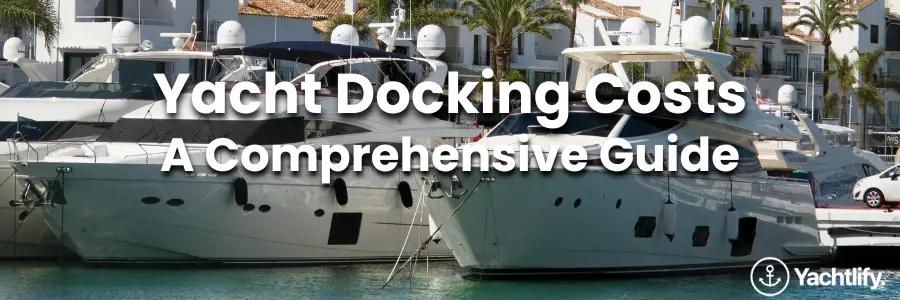
Docking a yacht is an essential aspect of yacht ownership, offering security and accessibility for your vessel. However, the cost of docking can vary widely based on several factors, including location, size of the yacht, and the amenities provided by the marina. This comprehensive guide aims to shed light on the various expenses associated with yacht docking, helping yacht owners make informed decisions.
Key Factors Influencing Docking Costs
- Location : The location of the marina plays a significant role in docking fees. Prime locations in sought-after destinations often command higher prices due to their popularity and limited availability.
- Size of the Yacht : The length and beam of a yacht directly impact docking costs. Larger yachts require more space and often special accommodations, leading to higher fees.
- Amenities and Services : Marinas offering extensive amenities such as electricity, water, security, Wi-Fi, and on-site maintenance will typically charge more for their docking spaces.
- Seasonality : Seasonal demand can affect docking prices, with peak boating seasons seeing an increase in rates due to higher demand.
Average Docking Costs
The cost of docking a yacht can range from a few hundred to several thousand dollars per month. For example, a small yacht (up to 30 feet) may cost anywhere from $300 to $800 per month to dock, while larger luxury yachts (over 100 feet) could see fees in the range of $3,000 to $10,000 per month or more, depending on the location and services provided.
Short-Term vs. Long-Term Docking
- Short-term Docking : Ideal for travelers or those looking to dock for a few days to weeks. Rates are often calculated per foot, per day.
- Long-Term Docking : More cost-effective for those planning to stay at a marina for several months or the entire season. Many marinas offer discounted rates for long-term commitments.
Additional Costs to Consider
- Utilities : Charges for water, electricity, and other utilities may be billed separately or included in the docking fee.
- Maintenance and Repairs : Access to on-site maintenance and repair services can add to the overall cost.
- Insurance : Some marinas require proof of insurance, which could lead to additional insurance costs for yacht owners.
Tips for Reducing Docking Costs
- Compare Marinas : Research and compare prices and amenities of different marinas.
- Negotiate Rates : Don’t hesitate to negotiate long-term docking rates.
- Join a Yacht Club : Membership in a yacht club can offer discounted docking rates and other benefits.
- Consider Off-Peak Seasons : Docking in the off-season may provide lower rates.
The cost of docking a yacht involves various factors and can significantly vary. By understanding these factors and considering the tips provided, yacht owners can find the best docking solutions to fit their needs and budget. Whether you own a small yacht or a grand vessel, the key to managing docking costs lies in careful planning and informed decision-making.
Remember, the joy of yachting comes with its share of responsibilities and costs. However, with the right approach, you can ensure that your yachting experience is both enjoyable and economically feasible.
Listing your boat with Yachtlify provides several unique benefits, including:
- List once, post on multiple platforms (Yachtlify.com, Facebook Marketplace, Instagram, and others).
- Schedule showings and sea trials with our calendar and reminders.
- View listing engagement analytics across platforms.
- eSign, state forms, and Coast Guard forms to manage closing documentation in once place.

Ridetheducksofseattle is reader-supported. When you buy through our links, we may earn an affiliate commission. Learn more
How Much Does It Cost to Dock a Boat? Updated Price in 2023
Written by Anthony Roberts / Fact checked by Jonathan Larson

Are you thinking of buying a boat? Many factors go into deciding whether a watercraft is a wise investment, including annual in-water dock space fees. If you are wondering how much does it cost to dock a boat, I urge you to keep on reading.
Docking a boat is similar to parking your car in your garage. Unfortunately, the docking space at the marina is not yours. Thus, you must pay the authorities a fee for docking your watercraft at a reserved ‘parking space’. So, how much money should you budget for dockage fees every year?
It varies depending on location and other factors. In the US, it can cost $800 to $1,800 to dock a boat per year.
Table of Contents
Why Rent a Slip
Cost to dock a boat in the us, cost to dock a boat in other countries, how much does it cost to live aboard your boat, 1. location, 3. boat length, 4. boat type, 5. berth type.
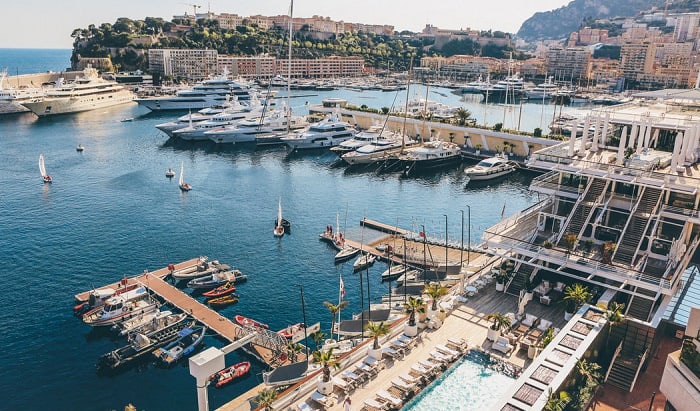
We call the space you rent for docking your boat at the marina ‘slip’ or ‘berth.’
You can say you need to rent a slip or rent a berth, but never lease a dock. A dock is a long structure that extends from the shore to over the body of water and is where different boat owners dock their vessels.
Let us look at the dock as an apartment parking lot with different parking spaces reserved for individual paying tenants.
The same thing applies when docking your boat at the marina. You rent a slip or berth (parking space) from the dock (parking lot).
The average boat slip cost in the US is $800 to $1,800 annually, depending on where the marina is and the boat length.
If you do not plan to dock your boat on a permanent berth, you may pay a different rental fee, depending on the time of year you lease the slip.
Docking in prime locations is also more expensive than in other cities and towns along the coastline. For example, docking in San Francisco, Miami, or San Diego can set you back by as much as $17,000 every year.
On the other hand, if you dock in a small North Carolina coastal town, you may only pay as low as $288 or as high as $3,600 per year. The rental fee depends on your boat’s length.
Some marinas also have a waiting list, requiring a deposit. For example, you may have to pay $50 to get on Marina del Rey’s waiting list.
Some parts of the world have higher docking fees for boats than in the US.
For example, mooring your 85-foot boat in the French Riviera can set you back by as much as €4,650 (about $5,520) per month during the peak season. If you decide to stay for several days, you might have to pay €185 ($220) per night.
On the other hand, berth rental for the same boat during the off-peak can cost you €60 ($71) per night or €1,500 ($1,780) every month.
Docking in the United Kingdom is also more expensive than in the US. If you have a 50-foot boat, you can expect to pay about £3,800 ($5,300) every year, with around £1,800 for docking. The cost for docking is more expensive in the Southeast UK. Residential mooring in the UK can cost 30% more.
Berthing in Krabi, Thailand can cost you 25 Baht (75 US cents) per foot per day. If you have a 50-foot boat, you can expect to pay a daily boat slip rental cost of $37.50 or a monthly fee of $750 (500 Baht per foot).
The average docking fee in India is about 30,000 Rupees (about $403) per meter per year. A 32-foot boat can have an annual berthing fee of about $4,000.
It would be wise to remember that these fees are for marinas in prime locations. The prices should be lower in smaller ports.
If you choose to live aboard your boat, it would be best to know that the cost of liveaboard slips is more expensive than other types of berth rentals.
Most marinas have a flat fee, plus a slip rent ranging from $350 to $1,500. Some docks may charge you double or quadruple the average rent of a regular berth. For example, if the berth costs $500 per year, you can pay anywhere between $1,000 and $2,000.
You might also want to know that the waiting list is long for liveaboard slips because of limited berths per dock. Some marinas can have a waiting period of three to seven years for their liveaboard slots.
What Factors Affect Docking Fees

The differences in docking costs reflect the impact of several factors, such as location, season, boat length, boat type, and berth type.
Wherever you decide to berth worldwide, location will spell a big difference between renting on a budget or leasing an expensive slip.
In general, metropolitan areas command a higher marina price than small-town docks and piers. The fees reflect the area’s standard of living.
For example, the median standard of living in Los Angeles is 73% higher than the national average. On the other hand, Louisiana has a cost of living about 13% lower than the whole country.
It would be more expensive for boat owners in Los Angeles to rent a berthing space than it is for people in Louisiana.
Price differences also exist within states. For example, docking in Miami can set you back by $23 per foot per month. On the other hand, you can get a budget-friendly slip in Fort Lauderdale for only $1.50 per foot per month.
Different docks within a particular city or county can also have various slip rates. For example, Marina del Rey charges boat owners anywhere between $192 and $240 per foot per year.
If you dock your boat at the Yacht Haven Marina at the LA Harbor, you can enjoy lower rates of $10.50 to $12.95 per foot per year.
The same is true overseas
Popular tourist destinations command higher berthing fees than other areas. For instance, while the Mediterranean has prohibitive slip fees, you can find more affordable rates in the Turkish, Middle Eastern, and African coastal cities.
The Mediterranean’s northern coast is home to some of the world’s best tourist destinations, including the French and Italian Riviera and the Greek states.
Africa, South America, and Asia offer some of the most affordable slip rental rates. However, key cities in these regions will still command a considerable fee. Hong Kong, Singapore, and Tokyo are examples.
If you plan to dock your boat on a permanent berth, you do not have to worry about paying seasonal fees. It only applies to transient boaters who may want a space for their watercraft for several days or a few months.
Unfortunately, boat slip rental cost tends to fluctuate with the changing seasons.
For example, prices are often higher in the spring and summer than in the fall and winter. More people tend to engage in water-related activities during the warmer months.
This surge in human activities prompts marinas and dock owners to hike their prices by as much as 40 percent from off-peak rates.
Some regions, such as those in the Mediterranean and the Caribbean, can charge more.
In general, the longer your boat, the higher the berthing rental fee. For instance, you can pay $250 per year for regular anchorage in the US if you have a 40-foot watercraft. If you have a 30-foot boat, you will only pay about $150 annually.
At regular docks, a slip for a 40-footer can cost $1,280 per year or $7,200 in prime locations. On the other hand, berthing a 30-foot vessel in a regular dock can warrant an $800 annual fee, $5,120 if in key cities.
The prices we discussed here are for boats. Some marinas may have different rates for other types of watercraft.
For example, the berthing rent for a catamaran is about 20% more expensive than ordinary boats. So, if you are paying $1,000 for a 40-foot boat, you may have to pay $1,200 if you have a 40-foot catamaran.
Many regions also have different rates for sailboats, commercial watercraft, liveaboard boats, and non-liveaboard vessels.
How you dock your boat is also a factor in the price.
Mooring is the most affordable way to ‘park’ your water vessel. Unfortunately, you will have to ride a small boat or dinghy to get to the shore. Mooring allows you to anchor your boat in the water , marked by a mooring buoy.
You can have a permanent or transient mooring. Permanent mooring is more affordable and has an exclusive slip for you to dock your boat.
An anchorage is similar to mooring, except that there is no platform to tie and secure your boat . You only drop the anchor and ride a dinghy to shore.
Docking is ‘parking’ your boat in designated berths at the marina. Its main advantage is that you have instant access to land. The issue is the rental fees.
Deciding to get a boat for your family not only involves budgeting for the vessel’s cost. You must also answer the question “how much does it cost to dock a boat?”
Berthing fees depend on the location, season, berthing type, boat type, and boat length. It also depends on whether you wish to live aboard your watercraft or not. On average, you can expect to pay anywhere between $80 and $17,500 per year.

I am passionate about water sports and technical fields, so combining both makes me interested in making contents about boat accessories. With my partner, we went on many trips and sports games together, which led us to think about how we can spread our joys and passions to many people.
How Much Does It Cost to Dock a Boat? (Price Chart)
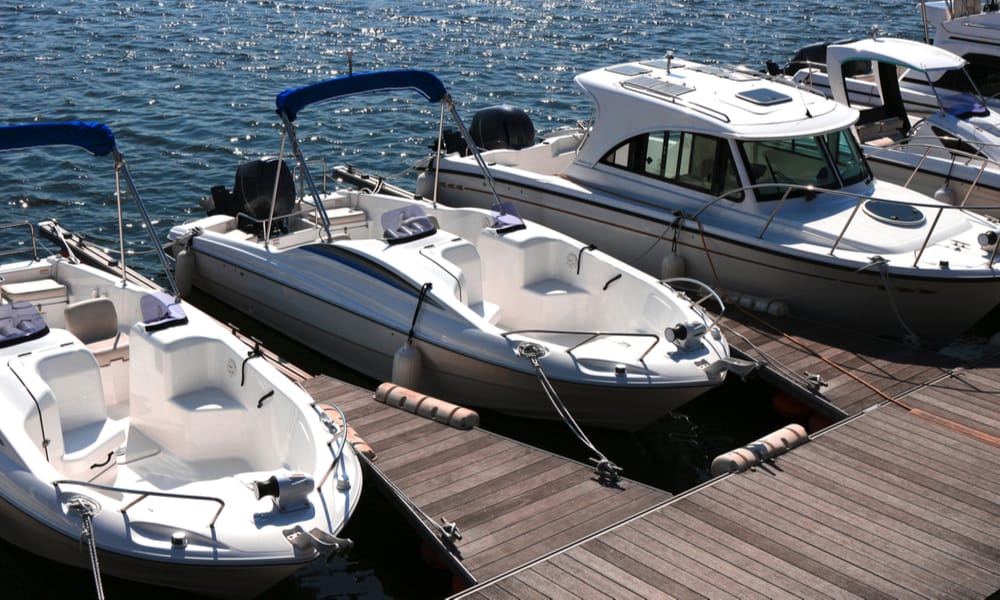
When you have a vessel, you probably wonder how much does it cost to dock a boat. Renting a slip (berth) in a US marina typically costs $12 to $240 per 1 foot (0.3 m) of the boat’s length a year. Roughly, most marinas will rent a spot for $50/ft a year on average.
In most cases, you will probably need to pay $800 to $1,800 per year for an average sailboat. Remember that this number can significantly vary depending on a boat’s length, location, and season. However, you can find alternative berth types that can save you money. Let’s see.
Table of Contents

Factors Affecting Docking Price
Berths types, slip cost in the us and canada, slips costs in europe, docking length, things to consider before docking.
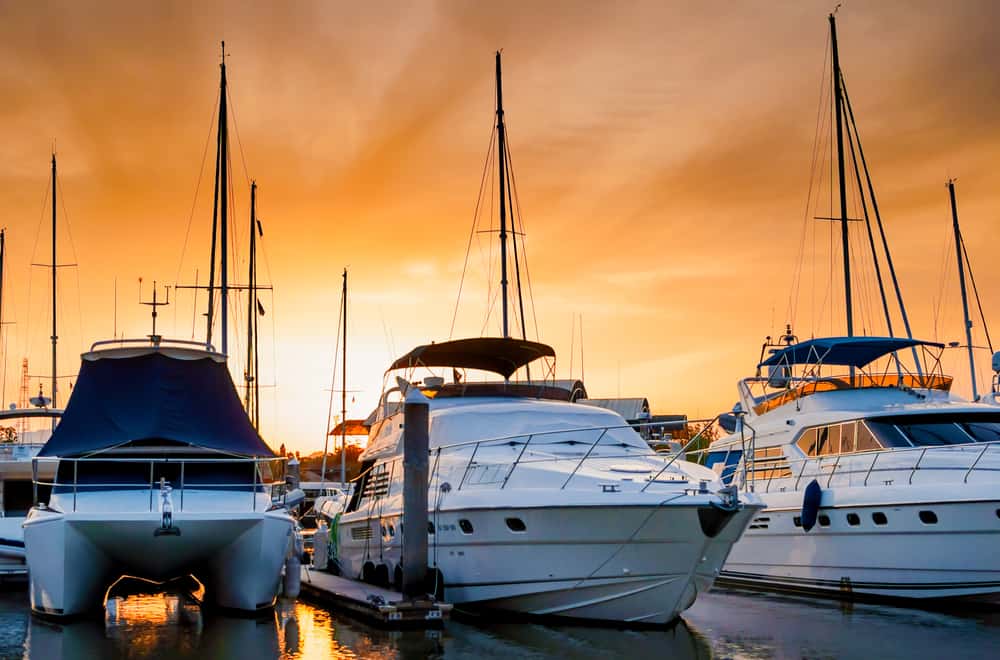
Believe it or not, you can secure your boat in a fixed spot in a few ways. This service price will differ depending on the berth type you choose.
Anchorage – It is a place where you can drop the boat anchor without access to the shore. In this case, you need to provide your own anchor .
Mooring – It is a permanent spot for your boat in the water. In this case, you need to use an anchor fixed to a buoy or seafloor to pin the vessel without direct connection to the land.
Docking – It is tying the boat with slips or berths to a particular spot in a marina. The primary advantage of this method is access to the land with a slip or berth to secure your boat.
In all cases, you need to pay the required fees for keeping the boat at the place. It is possible to take:
- Transient moorings when booking a docking place per day
- Permanent moorings when booking a docking for the entire season
As you can guess, annual berths are less expensive options, and you will typically pay three to four times less than for renting a berth daily. You can also have an opportunity to buy a berth in some marinas, and prices will vary depending on location.
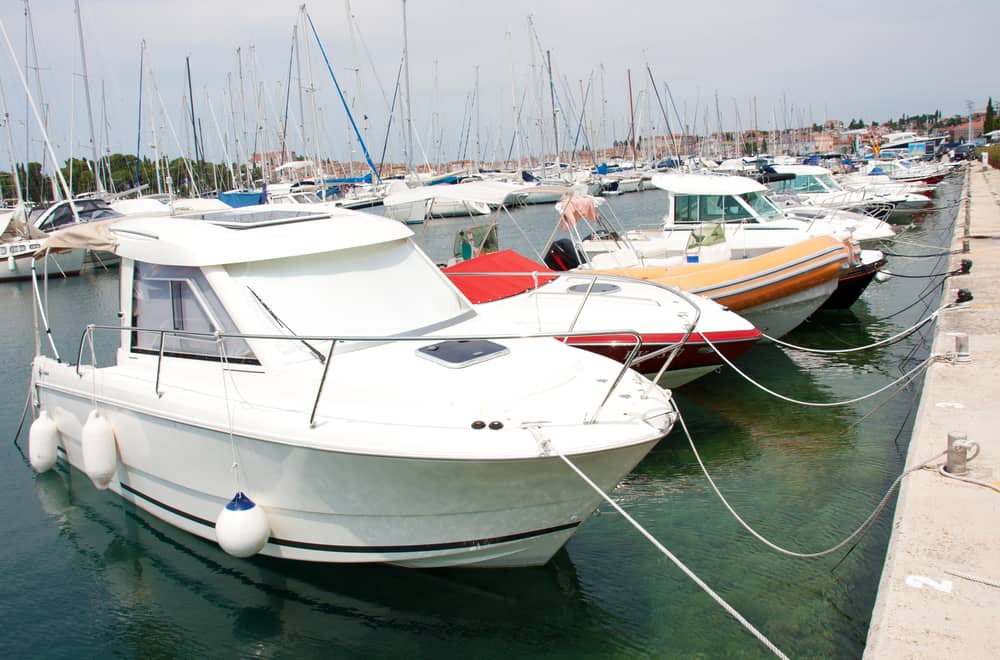
Location will always significantly affect docking price and depend on standards in the particular region. Typically, prices will be higher in city marinas than in small-town docks .
For instance, a budget-friendly Fort Lauderdale will charge $1.50/ft monthly, while you need to pay $23 for the same boat and period in Miami.
Even docks in the same city have different fees. For example, docking a boat in Yacht Haven Marina in Los Angeles is $10.50 to $12.95/ft a year. On the other hand, Marina del Rey in the same city will charge $192 and $240/ft per year.
The same is overseas. The highly desirable Mediterranean has high slip fees, while marinas in the Middle East, Asia, South America, and Africa will be more affordable. However, you can expect that Tokyo, Hong Kong, and Singapore as key cities are expensive.
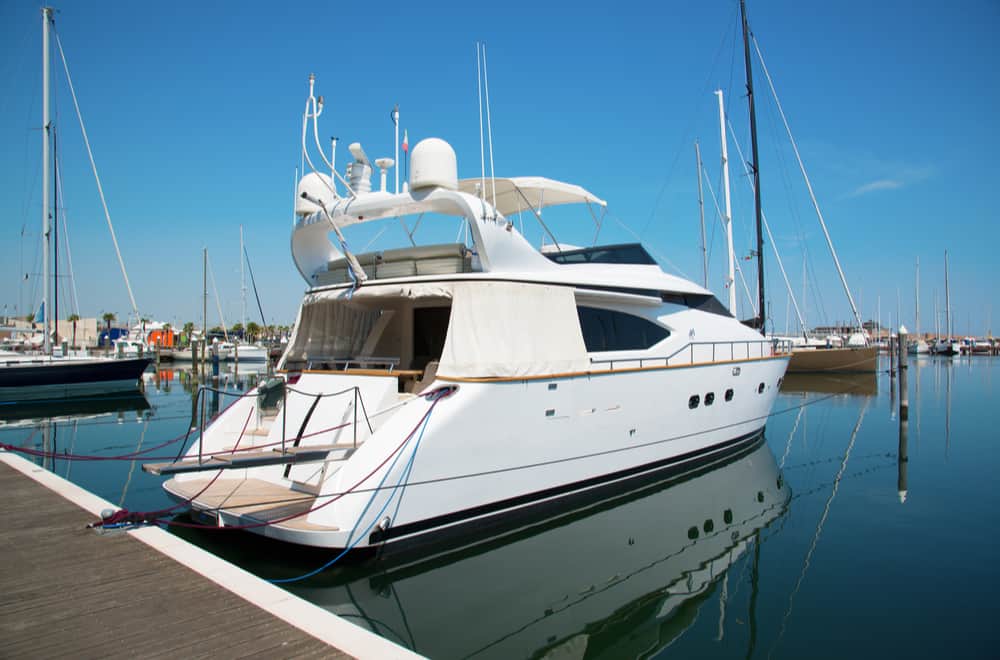
Most boat owners look for seasonal or annual slips. You can pick out:
Regular docking slip
It is a berth in a small marina located in local towns along the coastline. An average boat slips rental cost in such a place is typically $2 to $3 per hour.
If you want to stay overnight, you should pay $4 to $6 for this service. On the other hand, it is necessary to set aside $20 to $25/ft for a monthly bill or $23 or $24/ft when you need a spot for a year.
In this case, you will have a spot for your boat but without premium services available or direct access to the most famous sailing waters. However, it is an excellent solution when you don’t plan to stay long.
Prime location
These marinas are located in cities and famous bays in Florida, San Francisco, San Diego, and Los Angeles. They are more costly but typically offer premium services and quick access to popular sailing waters. Premium services include:
- Boat maintenance and necessary repairs
- Fuel station
- On-site restaurants, cafes, and shops
- Laundry service
- Wi-Fi and TV
- Docking assistance
- Wintering cleaning and storage
Winterizing a boat can cost you a few hundred dollars, but the most expensive marinas can charge even $2,000 for this service.
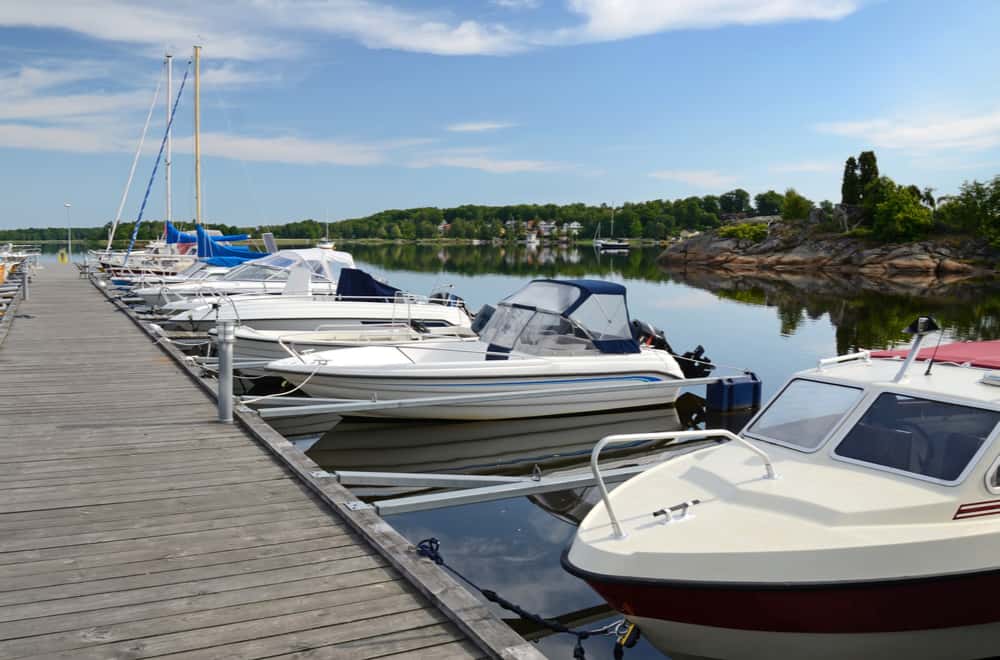
Since the Mediterranean is a popular destination, you should count on high slips costs. Depending on location, you will need to pay annual fees of:
- $50 to $450/ft (€135 – €1,350 per meter) per year in France
- $75 to $175/ft (€225 – €525 per meter) per year in Greece
- $100 to $440/ft (€285 – €1,350 per meter) per year in Italy
- $160 to $350/ft (€435 – €1,050 per meter) per year in Croatia
Greece has not many marinas since Greeks prefer free or cheap moorings and anchorages. On the other hand, you should count on a $4,500 annual fee in Italy and France on average if you have a 32 feet (9.75 m) long yacht.
Remember that prices will vary depending on the marina in the same country. For instance, the most costly port in France is the Old Port of Saint Tropez. It is double in price than the Port of Cannes.
The most expensive marinas worldwide are in Monaco, so you will need to pay $9,000 to $43,500 for a slip monthly. However, a rate can reach up to $100,000 per month during the Grand Prix.
Most marinas in Europe have high and low seasons because of harsh weather in winter. In this case, renting a mooring can cost you 70% less in the low season.
The peak season in this destination is from July to the beginning of September, making this period the most expensive in the year.
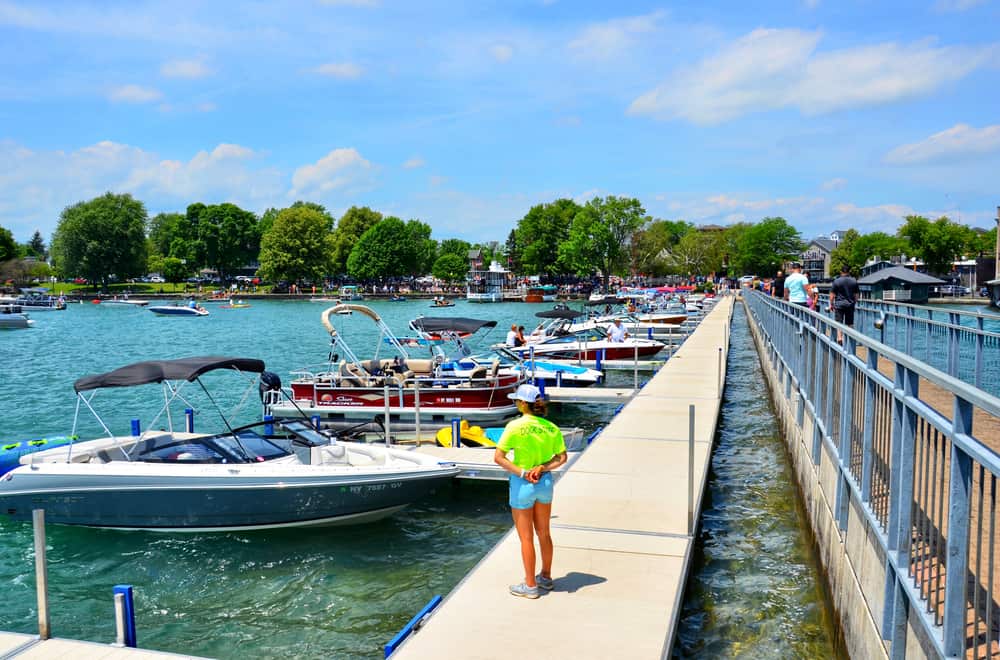
Be prepared that boat size is everything when it comes to docking prices, and most marinas will charge their fees by your boat length in feet/meters.
Be prepared that marinas measure your boat differently, so you should be careful when calculating. You can recognize four measurements by feet:
- LOA (length over all/over air)
- LOH (hull length)
- LOD (deck length)
- LWL (the loaded length at the waterline)
LOH is a documented boat size without extended non-living spaces, like the swim platform or bow pulpit. However, it is not the same as the space your boat will take up in the marina, so you will typically pay a fee regarding LOA.
To make things more complicated, there are a few LOA variances. That is the boat length from the bow spirit tip to the swim platform in most cases. However, some marinas also include dinghy length.
Keep in mind that a marina can charge a higher rate for wider boats like Catamaran. An average width for a slip is 16 to 20 feet (5 – 6 m), and you will pay an additional fee for a wider vessel.
Average prices in the US per boat length
Typically, you will pay more for a longer boat. For instance, the dockage fee in the US can be only $150 a year for regular anchorage if you have a 30 feet (9 m) long boat. The price will be $800 at a standard dock and $5,120 in prime locations.
On the other hand, the annual price of regular anchorage will be $250 for a 40 feet (12 m) long vessel. You will need to pay $1,280 a year for a standard dock, while prime locations charge about $7,200 annually.
Remember that marinas always offer a discount on slips for docking a boat during the year. If you want to get a permanent spot for an average 24 to 72 feet (7.5 – 22 m) long boat, you should count on an average slips that will cost you:
- $12 to $50/ft per year for regular docking slip
- $120 to $240/ft per year for prime locations like Florida and Los Angeles
- $102/ft per year for a prime Toronto dock location
- $192 to $384/ft per year in Marina del Rey, one of the most expensive marinas
You should also set aside an additional $25 to $50 deposit for a car parking card and security key. Remember that docking a Catamaran is always about 20% more costly because this boat type takes up more space.
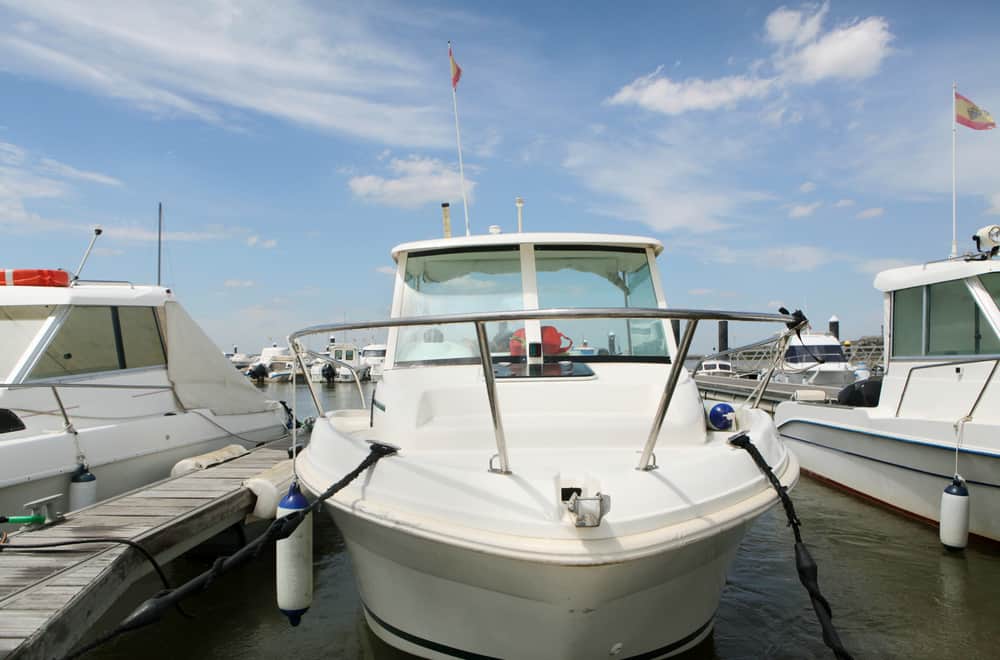
Night vs. month docking
Marina costs are typically two to even five times the cost of an average RV campground when you need overnight docking. However, marinas and local RV parks have similar monthly prices.
In most cases, you will need to pay $20 to $45 for transient moorings per night in the US, regardless of the boat’s length.
Marinas are often cooperative when staying a few days more than a paid week or month. They will charge you a daily rate based on the previous rate in most cases.
Unfortunately, some marinas will charge a higher rate for an extended period, so you need to be informed to avoid unpleasant surprises.
Long term docking
Many marinas are liveaboard friendly , and you can ask for long-term storage for discounted rates. There is no rule about pricing, and savings can be considerable or only a few percent.
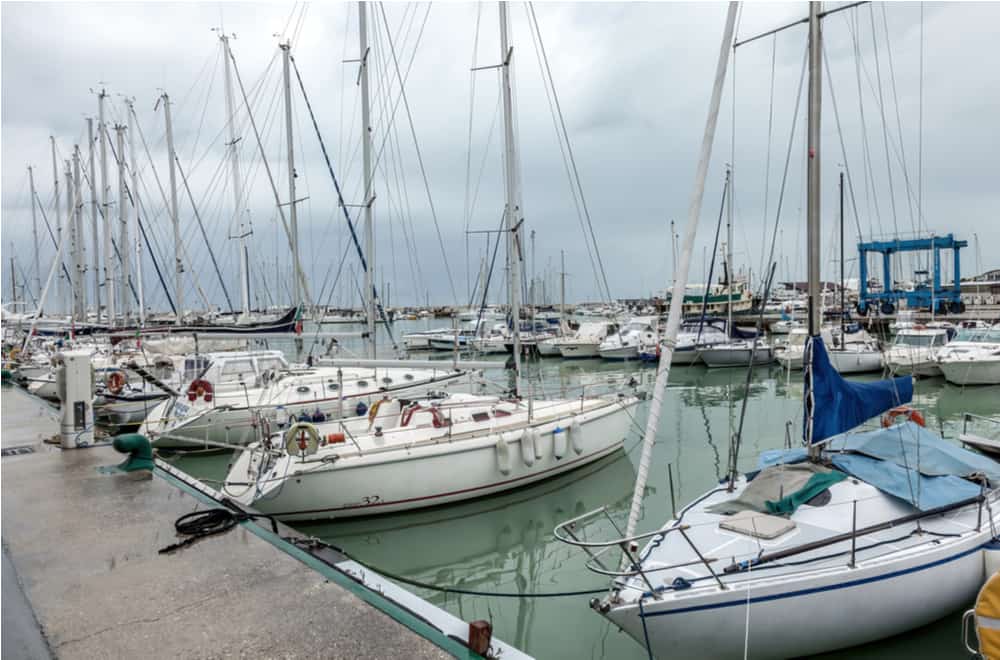
Once you start looking for a slip for docking in a marina, you should calculate a few things, like:
Docking or mooring – A mooring and anchorage are excellent options for you if you prefer getting privacy. On the other hand, docking is a more secure option.
Availability – Be aware that a few top-rated marinas have waiting lists, particularly at peak season. Therefore, you need to pay a waiting list deposit to get in. For instance, the famous Marina del Rey will charge $150 for that service.
Travel time – You should know in advance how long you want to travel. That will determine a marina location, significantly affecting the final price you should pay.
Marina accessibility – You should check on time whether a mooring is accessible at any time or at a particular tide time. The second option will significantly reduce costs.
Marina security – A marina should provide a security guard and controlled access to the docks to keep your boat safe.
Marina condition – It is crucial to check how secure is a marina you want to use. Therefore, you should know about large tidal waves or possible strong currents nearby.
Work policy – Many marinas won’t allow access to unknown people for possible professional service. You need to pick out one of their professionals to help you maintain or repair a boat.
Yacht club marinas – Always check whether a marina is within the yacht club. In this case, you need to become a member, which is typically expensive.
Additional charges – Besides regular marina fees, you need to pay a tax in some countries when using it for less than seven months.
Electricity will cost you $10 to $50 per day, and you should add $5 for the pump-out fee. Finally, you should pay a tip of $5 or $10 to a person who will catch the line and help you plug the boat.
Once you decide to purchase a boat, you should consider docking coast beside the vessel price. Berthing fees will depend on the berthing type, boat type and length, location, and season. The price range is wide, and you should expect to pay $80 or even $17,500 for this purpose annually.
Related posts:
- How to Obtain a Motor Boat License? (Unlimited Guides)
- 11 Right of Way Rules for Boating
- What Does A Ship Captain Do?
- What is the Stern of a Boat?
Leave a Comment Cancel reply
Save my name, email, and website in this browser for the next time I comment.
Posted on April 7, 2022
How to Determine the Cost of a Dock

Email This Link
Please copy and paste this link into your email.
Written by ShoreMaster Marketing
Trying to look up the average price of a boat dock will get you a wide range of figures in the multiple thousands of dollars. It’s a lot of money, but why wouldn’t you want the very best for something that you’re trusting to hold you and your boat when the weather gets nice? Boat docks are an important part of protecting the investment that you’ve put into your boat.
There’s no “one size fits all” approach to working out the average cost of a boat dock because of the number of variables that go into creating one. Your budget is going to be an important factor in what you get, so make sure to allocate your funds properly when it’s time to start investing. While we can’t give you an estimate of how much a dock would cost, we can tell you where you’ll be putting your budget.
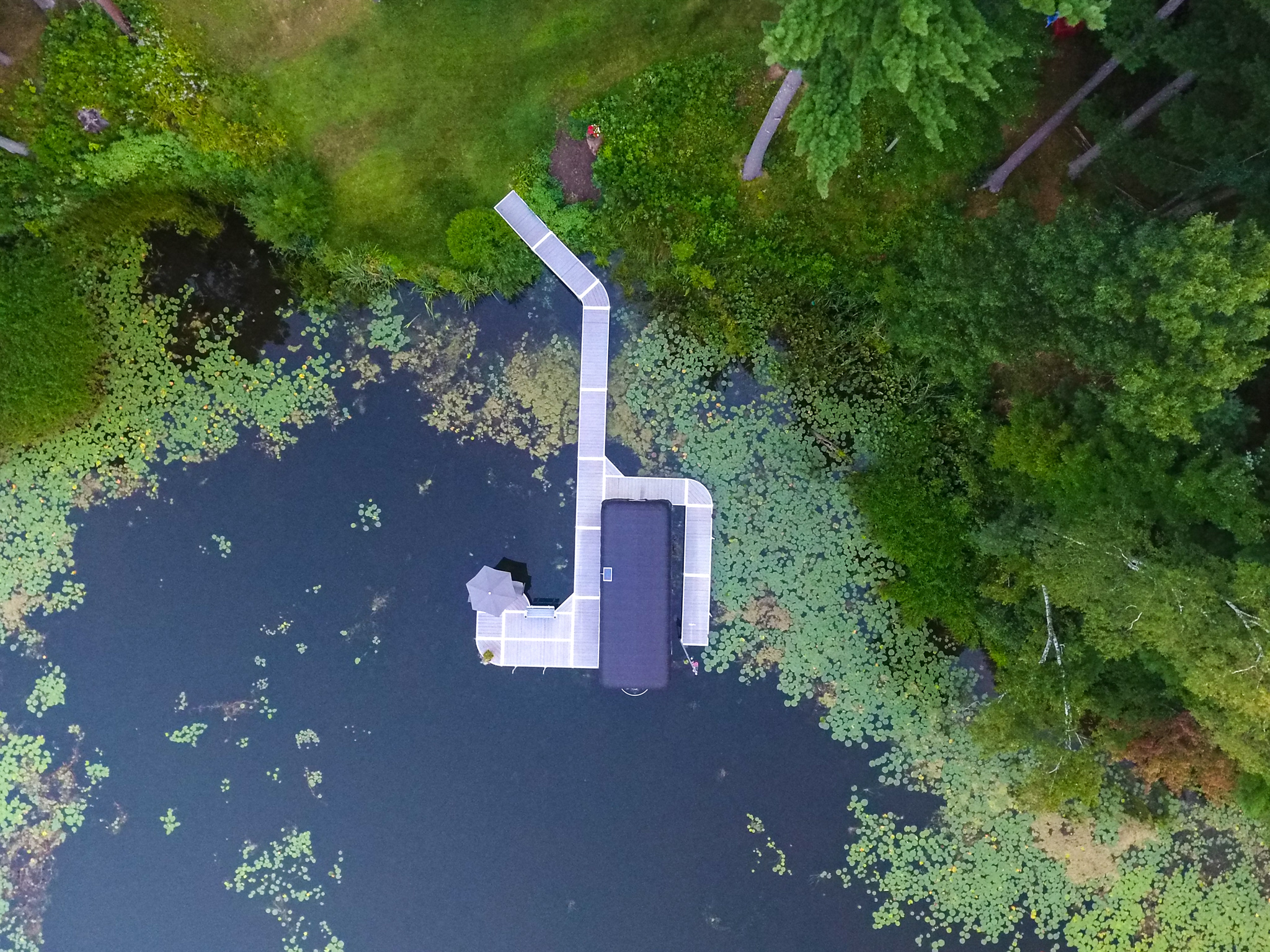
The right kind of dock is the most important consideration because that’s the literal foundation on which the rest of your boat dock system is built. Floating docks, docks built on pilings, crib docks, pipe docks, and suspended docks will all have different costs based on their complexity, materials, and whatever labor is required to install them. The materials that these docks are built from can also vary in price and make the price of your dock change, too. Consider that some materials or docks require more maintenance than others, that you might need to remove sectional docks for the winter in your area, and the fact that you might be restricted to particular styles or materials based on your water, and you might have some budget considerations.
Configuration
Is your dock going to be a very simple, bare-bones platform that you use to access your boat? Are you going to build an outdoor entertainment space with plenty of space to spread out, relax, or play? The larger your dock is, the longer it will take to assemble, the more materials and sections are needed, and the more money it will cost. The same goes for more complex layouts as well: more complicated docks require more planning, which means more money. And if you’re buying boat dock accessories to go with your dock, like dock furniture or water sports equipment, those pieces will factor into your cost as well.
Decking and Other Materials
Decking can make up as much as 25% to 50% of the price of a dock, although that number can get higher, so keep that in mind when budgeting. Dock decking material costs can vary, with cheaper woods requiring more expensive maintenance later on with aluminum decking that’s more expensive upfront but doesn’t require anywhere near as much maintenance even years down the road. Not only do the decking materials themselves have different costs, but a lot of their cost is also dependent on your dock configuration plans: larger or more complex boat dock systems will require more decking and, therefore, more initial investment.
Landscaping or Other Groundwork
Will your shoreline need any construction work done before you install your dock? How about the dock itself? Landscaping, leveling, and foundation digging might factor into your cost, and installing pilings or other permanent dock support fixtures will cost money, too. Sectional dock owners don’t need to worry as much about this because sectional docks are designed to come apart and be reconfigured or removed as needed, which makes the landscaping requirements minimal. Floating docks require anchors, but beyond that, very little in the way of infrastructure.
While it might not be part of the boat dock itself, getting all of the required legal stuff out of the way is going to factor into your budget. Some areas require you to have permits to build and install a dock, and you might need to set aside some money for a professional inspection as well. Please pay these fees and do things properly and legally because you don’t want to run the risk of having to take down your boat dock after investing your time and money into it.
ShoreMaster Boat Dock Systems
The idea of buying and installing a boat dock might be overwhelming when it’s broken down into different line items of your budget. However, a premium dock system is one of the best waterfront investments you can make (after your boat, of course). A boat dock gives you a place to moor or lift your boat out of the water without needing to pull it up on shore all the time, which protects it from damage. Having your boat accessible by the water’s edge saves you from competing with other boaters for ramp space when the weather is nice, and you won’t have to rent space in a marina or other area. On top of the practical benefits, there’s the fact that a boat dock can become an outdoor entertainment space even when you’re not boating, making it a wonderful addition to your waterfront home. The upfront cost of a dock might seem like a lot, but it will pay for itself in maintenance and rental costs as long as you find the right system.
Luckily, the right help can go a long way toward making sure that your boat dock system is within your budget, well-suited for your shoreline, and will protect your boat for years to come. ShoreMaster has an extensive dealer network across the United States and Canada as well as years of expertise and engineering experience to know what makes a good dock system. For more information on what dock system will work best for your water or to work on upgrading your existing boat dock system, contact a ShoreMaster dealer near you .
FIND MORE SHOREMASTER NEWS
Recent news and articles.
Residential Boat Lifts: Enhancing Your Waterfront Home
Custom Boat Lifts: Design & Installation Guide
Boating Tips That You Have Never Heard

How Much Does A Boat Dock Cost?

If you live on a lake, river, or other body of water, you may want to consider building your own dock . A dock gives you better access to the water, makes launching a boat easier, and in many cases can seem like a deck on the water.
Docks come in many shapes, sizes, materials, and configurations. Most homeowners building a personal, stationary dock spend around $5,400 for a wooden dock measuring 6 x 30 feet . By fixr.com .

Many different types of docks are available. Some remain in the water year-around at your lakefront property , while others are only put in at the start of the season and taken out later. Some docks use a combination of stationary and temporary portions that let you increase the size of the dock as needed:
- Floating docks : these are meant to be temporary, whether used alone or in conjunction with a stationary dock. They float on barrels or special containers that keep the dock on the surface of the water.
- Piling docks : these are what most people are familiar with. They are made by driving wooden pilings deep into the sand beneath the water and building the dock on top.
- Pipe docks : these are a newer form of piling. They use a PVC pipe filled with concrete to sink the wooden pilings, which makes for a faster install.
- Crib docks : these are made of a very large container filled with rocks or concrete that the dock is then built on top of. They are very stable and secure and last for years.
- Suspension docks : these are designed to hang over the water, rather than go in it or on it. They can be raised or lowered depending on the water level and your needs.

Many different materials go into building a dock. And, the materials you choose vary depending on what type of dock and what type of water you have.
Most stationary docks use at least some form of pressure-treated wood for the pilings or beams. There are some preferred lumbers, such as western red cedar , redwood , Cypress, and eastern white cedar, while crib docks typically need Douglas fir, tamarack, or hemlock. But the important thing is to choose a hardwood that has been pressure-treated to a minimum of 0.60 pcf because anything softer will not hold up to the use. If the water is not fresh, then you need lumber that has been treated to a minimum of 2.5 pcf. This is true regardless of what lumber you use.
This may not be the only component of the dock, however. If you use pipe pilings, you also need PVC pipes at least 12 inches in diameter as well as concrete. Crib docks and floating docks also use concrete in their construction. Floating docks need plastic barrels or drums as well.
Suspension docks usually use aluminum, and modular or movable docks use aluminum for the framework. Some docks may also use it for the decking because it is very low-maintenance. Unfortunately, aluminum becomes hot very quickly in the sun, making this a poor choice for hot climates.
For the decking material, pressure-treated lumber, composites, and modified wood are all options. Plastic-based composites tend to break down quickly in the sun, while some older composites may swell with water. Newer composites hold up well in most docking situations and do not heat up in the sun, which is why most dock kits use composite decking.
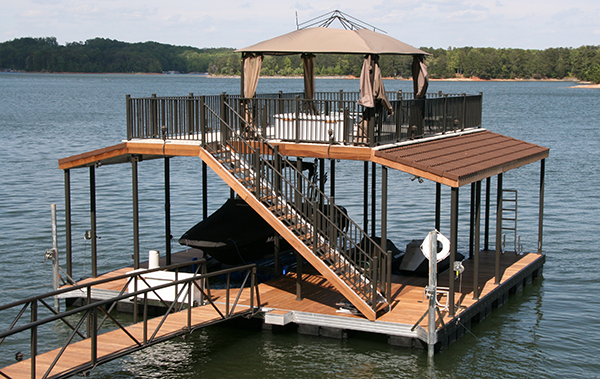
Configuration
The most common configuration for docks is to have the main portion extending straight out over the water, but this is not the only option. In some cases, a narrow walkway can widen out into a larger dock, only to narrow again at the boat slip.
In other cases, if you have multiple boats, it may be beneficial to configure the dock in an F, I, L, T, or H shape so that you can attach boat slips at various spaces. Other configurations may include a patio at one end or a Harbor-style dock that has a walkway running parallel to the water and extending the arms outward.
The key to determining the dock configuration is to figure out how you intend to use it. Fishing, sunbathing, and entertaining may need a wider section, while a dock meant solely for accessing a single boat can be a narrow walkway.
Installation
The installation of a dock varies tremendously depending on the type of dock. A typical piling dock begins with a CAD drawing to determine the size, shape, and load. Next, the water and waterbed are inspected to make sure it can handle the type of dock being considered. The area where the pilings will go is marked, and they are driven deep into the sand beneath the water. This is done with a large machine that pounds the wood until it reaches the correct depth.
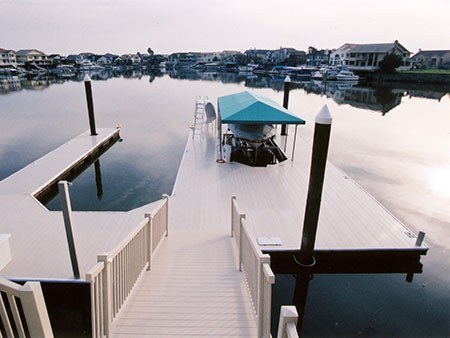
Once the pilings are sunk, the rest of the installation is a lot like a deck. A frame is built over the pilings, and the decking material laid on top. This can take several days to complete from start to finish depending on the size of the deck, the materials, and how deep the pilings must be sunk.
Labor is a large portion of the dock building costs. Many DIY kits and small, modular docks are available for $300 to $1,000 , for example, while a custom-built dock costs more than $5,000 .
In most cases, the labor portion runs around $20 per square foot , making a 6 x 30-foot dock cost approximately $3,600 . This can vary, however, depending on the type of dock and materials used.
Maintenance
The maintenance that your dockneeds varies tremendously based on things like the climate, type of water, type of docking material, and how much use it gets.
At a minimum, you should inspect the dock at the end of each season. Keep it clean, and make any necessary repairs to worn, cracked, or broken areas. If your dock is moveable, removing it from the water at the end of each season helps extend its life.
Enhancement and Improvement Costs
Many boat docks have additional structures nearby including boathouses. To dig a foundation for these structures, factor in an additional $6 per square foot . Also, if you choose to build a boathouse in addition to your dock , this will add between $10,000 and $20,000 to the cost.
Covered Dock
Some docks that are used year-around may benefit from having a covered section to keep the sun and rain off the boat. Typically, covered docks can be built of the same materials as the rest of the dock, although aluminum docks will usually have a stretched canvas top. Expect to add $10,000 to the project for a wooden covered dock .
A boat lift can help you make more use out of your boat and may even replace a traditional dock. They cost around $6,000 .
You may want to add lighting to your dock. Expect to pay an electrician $65 to $85 per hour for at least 3 to 4 hours of work.

Additional Considerations and Costs
- You need a permit to build a dock. Most docks have regulations they must follow, particularly in sensitive areas, regarding the size, shape, and material of the dock. You need to submit plans before proceeding.
- If you need to run electrical wiring to the dock for mooring or lifting , this will cost $6 to $8 perf linear foot , with most electricians charging a minimum of $200 .
- In areas where the water freezes during the winter, some docks may be damaged by the freeze-thaw cycle. This includes some plastics and pipe docks. Include a winter plan to ensure that your deck winters well.
- If you have a very deep body of water, you may need to use a piling or suspension dock instead of a crib dock. It will be difficult to pile up the rock and concrete high enough to support the dock, making this prohibitively expensive and potentially harming the water flow.
- If the bottom of the body of water is rocky and has variation in depth from the shoreline to the end of the dock, a suspension or floating dock may be your best bet to avoid extensive drilling for pilings.
- Crib docks are best left to the experts who know the water area. If you want to DIY this job, consider a floating dock or a dock kit.
- If you choose a wooden dock, check local regulations before proceeding. Some chemicals used in pressure-treated wood cannot be introduced to fresh water.
- If you have a house on the water, a dock can increase the value of the property because it provides greater access to the water. The amount varies from state to state and by the type of dock.
Reposted by Scott Freerksen “The Lake Guy”
Share this:
Leave a reply cancel reply.
You must be logged in to post a comment.
Follow Lakefront Living International, LLC
Get every new post delivered to your Inbox
Join other followers:
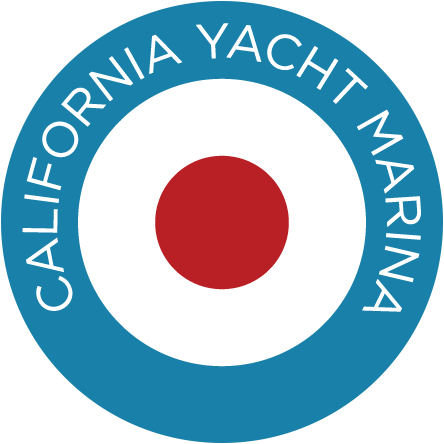
California Yacht Marina
- Marina Management
- Different Types of Boats
- Film Production
- Surrounding Activities
- Cabrillo Marina
- Event Venue
How Much Does It Cost to Dock a Boat in Southern California?
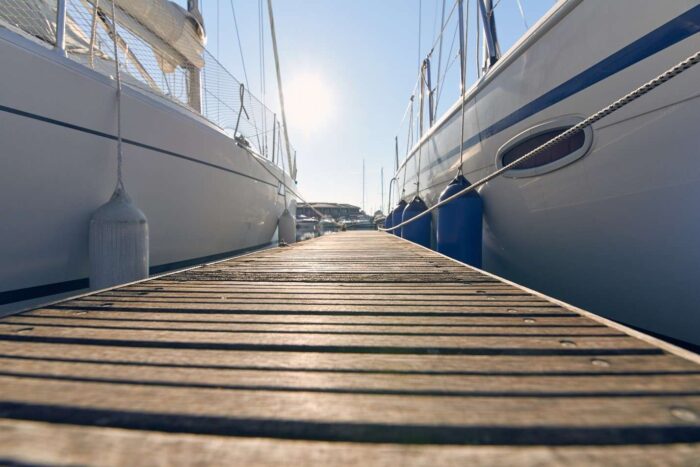
Quality Marinas, Docking, & Boat Slips in Wilmington, CA
If you have a boat or are in the market for buying one, you might be curious about how much it costs to dock your boat in Southern California. As a boat owner, you must ensure you have a safe, secure location to park your vessel. It’s also beneficial if that location is comfortable, convenient, and affordable. As the number one marina in the Southern California area, the California Yacht Marina has years of experience servicing boaters in the community. We have spacious boat storage, modern amenities, and exceptional security at our marinas in Wilmington , Chula Vista, Port Royal , and Cabrillo , CA.
Our full-service marinas are the perfect place to store your boat any time of the year. We can help you understand the cost breakdown and all the amenities that come with docking services, so you can be as informed as possible when deciding which marina is right for you. If you’re an adventurous Southern California boater and prefer to live on your vessel, it’s essential to know the costs associated with your lifestyle. We also have commercial rentals and gorgeous event spaces ideal for weddings, community functions, and family gatherings. If you’re looking for the best spot to dock your 25′-43′ cruiser, we have the space for you at our state-of-the-art marinas. Contact our team today to learn more and get a quote!
How Much Does It Cost to Dock a Boat?
So, how much is it to dock a boat at marinas in Southern California? This is probably one of the first questions you ask yourself as a prospective boat owner, as you need a secure and safe spot to store your boat when you’re not using it. Like most transactions in life, you get what you pay for. When docking your boat, you want to ensure it’s the right place, where you feel comfortable stepping aboard and have everything you need. Higher docking fees will include more benefits, such as included amenities and how seriously the marina takes public safety and security, so you feel safe leaving behind your personal belongings.
On average, the yearly cost of docking for regular sailboats in Southern California starts from $800 to $1,800. The cost of docking slips ranges from $12 to $240 per foot annually, with the average being around $50 per foot annually. Docking fees depend primarily on the boat’s length, location, and season.
Regular Docking Slips
Regular docking slips are simple berths found in marinas and are typically used by boaters traveling in remote locations, such as the coastline of a small town. These docking slips are affordable, but they usually don’t offer easy access to popular sailing locations. These boat slip rentals can be as low as a few dollars per hour and are preferred by traveling boaters who only plan on dropping by.
Overnight stays at these docks can be between $4 and $6. You may also use these boat slips monthly or annually, ranging between $20 and $25 per foot. These charges vary depending on the location and amenities provided. Regular boat slips typically provide boaters with a dock box, electricity, fresh water, and sometimes a lounge.
Prime Location Docking Slips
If you’re docking your boat at a prime location, the cost increases to around $120 to $240 per foot annually, with some luxurious marinas costing $192 to $384. The nightly rate for transient moorings ranges from $20 to $45, depending on the location and amenities involved. The average boat slip at prime locations costs around $80 to $250 annually for any boat length. In addition to docking fees, boaters can expect some other charges in prime locations. Some of the more popular marinas in Southern California have waiting lists, requiring boaters to pay a deposit to be placed in the queue.
How to Choose a Marina for Docking Your Boat
Choosing a marina to dock your boat at can be overwhelming. It can be hard to choose with so much variance in the amenities available, policies, and locations. Most Southern California marinas are known for their versatility in providing high-quality services for boaters, but docking fees can vary significantly. Here are some things to consider before deciding which marina you’ll dock your prized vessel at:
- Availability – Whether or not your prospective marina has availability for your boat is an essential part of the search. Some of the more popular marinas in Southern California have waiting lists, so it’s necessary to plan ahead and expect a shortage of boating slips, especially during the peak season.
- Security – You’ve made a considerable investment in your boat, so it’s only natural that you want to dock it in a safe, secure location. When searching for a marina, ensure there’s controlled access to the docks and security guards are in place to protect your personal belongings.
- Wet or Dry Slip – Wet slips cost more than dry slips because your boat will be in the water the entire time it’s stored. If you don’t use your boat regularly, dry slips are fine and better for boats that need less maintenance throughout the year.
- Minimum Boat Length – Marinas prefer to rent out their spaces in the most efficient manner possible. If your boat is too small to occupy a slip, the marina might think it’s a waste of money because a large vessel bringing in more money could be in its place. This is why some marinas have a minimum boat length policy in place, requiring you to pay the same charge for a 20-foot boat slip, despite having a smaller craft.
- The Condition of the Marina – Boaters need to understand the conditions at the marina. Are the currents strong? Are there large tidal waves? Dock exposure and the marina’s condition should play an important role in your decision-making.
- Work Policy – Some marinas in Southern California don’t permit boaters to conduct professional service on their property, making it more difficult for boat owners to make repairs or perform maintenance on their boats while it’s docked. Some marinas utilize a list of recognized professionals who are permitted to make repairs and maintenance on their property.
Check Out Our Premier Southern California Marinas Today
Are you curious about how much it costs to dock your boat at California Yacht Marina’s prime locations? We have the perfect space for you if you need a premier spot to dock your vessel. No matter what your boating needs are in Southern California, our team can help. Your 25’ to 43’ boat will fit comfortably and securely at any of our marina locations in Wilmington , Port Royal , Cabrillo , or Chula Vista, CA. Our boat slips can be rented daily, seasonally, or annually, and we’re happy to give upfront estimates for all our boating slips and services. Contact us today to learn more about docking your boat at our beautiful marinas!

How Much Does It Cost to Dock a Boat?
Apr 23, 2022 | Boat Buying
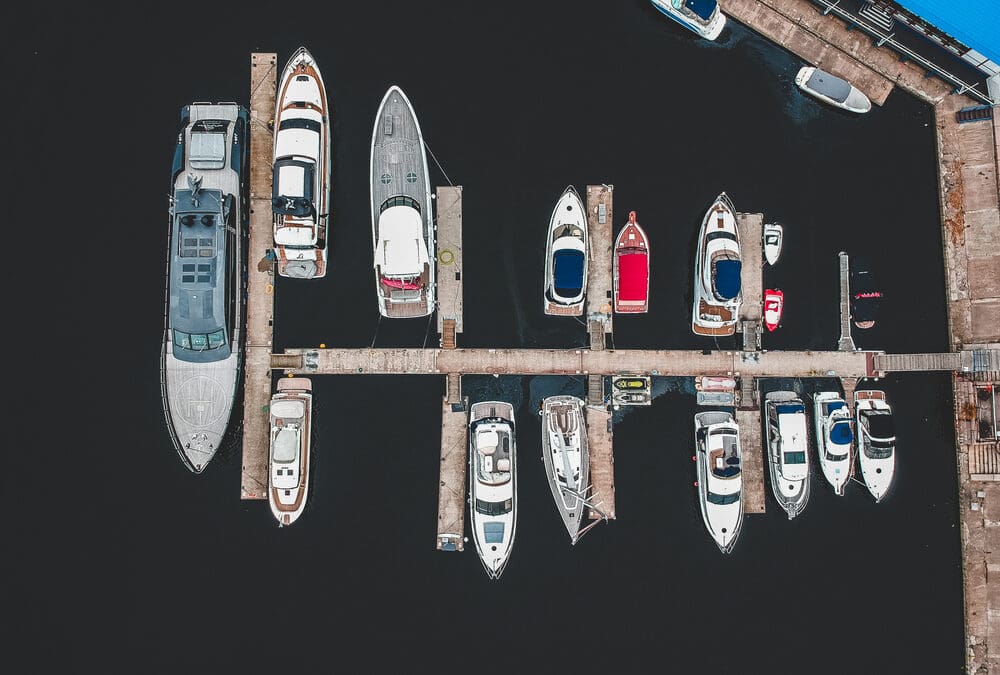
Before you decide to buy a boat and sail into the sunset , you may want to consider the cost. For instance, do you know how much it costs to dock a boat somewhere? If you said no, you are in the right place. After all, you don’t want to start on a high seas adventure only to be knocked overboard from shock when you decide to rent a slip.
Docking a boat in a marina is much like parking your vehicle in a parking garage. Thus, you must pay to use the spot for any length of time. So, how much does it cost to dock a boat for a day? What about a year? Those questions and more are going to be answered right here.
Why You Should Rent a Slip
First off, let’s discuss the benefits of renting a slip. A slip is a space you rent at a marina. Sometimes, you may hear it called a “berth.” The dock is a long structure that juts away from the shoreline. Branching off the dock are slips or berths.
Renting a slip ensures that you will always have a reserved spot at a dock where your boat will be safe until you are ready to use it. Not only that, but some marinas provide additional amenities, such as boat washing. Others will allow you to dock, rent a slip for a year, and live aboard your ship the entire time.
There are many factors that go into calculating the cost of docking a boat, which you will see soon enough. Here are the averages you can expect:
Slip Costs in US and Canada
Costs vary greatly throughout North America. Consider the following:
- To rent a slip for a single day, you are going to pay an hourly rate of $2 to $3 per hour.
- If you want to rent overnight, the cost is around $4 to $6 a night.
- Renting monthly is no longer by the hour but by the length (feet) of the ship plus a standard rate of $20 to $25 per month.
- Need a spot for a year? You pay $23 to $24 per foot per month.
If there are any amenities or premium services available, you can expect to pay extra for those, as well.
International Slip Costs
Planning on traveling to international waters? Docking fees are a little different in other countries beyond North America. Although the fees are calculated using the length of the ship, there may be added mooring fees, as well as peak traveling season price hikes to take into account. For example, in the French Riviera, you may end up paying about $220 (€185) a night. You may end up putting out $5,520 a month for an 85-foot boat during the busiest times of the year.
Heading to the UK? A 50-foot boat is going to cost you about $5,300 (£3,800)a year, and you also have to pay £1,800 to even dock.
Croatia charges around $160 to $350 (€435 to €1,050) per foot/meter for a year of docking.
Keep in mind that mooring prices vary dramatically by location, even along the coast of one country. For example, if you head to the Port of Saint Tropez instead of the Port of Cannes, you end up paying double for the same berth.
Then, there is Monaco—the most expensive slips in the world. The monthly rental rate varies between $9,000 to $43,500. During the Grand Prix, that price can skyrocket to $100,000 a month!
Factors Affecting Docking Price
Having seen the difference in rates throughout North America and Europe, you may be wondering what the factors are that affect docking prices. Turns out, there are several things contributing to the cost of docking a boat: location, season, boat type, boat length, and berth type. Let’s look at each of these in detail.
It’s as they say in realty or business: Location, location, location. In general, no matter where you are in the world, an urban zone is going to fetch a much higher price than somewhere with small piers and anchorages. For example, the transient rate for a slip in Annapolis, MD is about $3.75 per foot, per day. Meanwhile, in Portland, ME, the cost is about $3.00 per foot for any boat up to 39 feet long.
The same applies to the rest of the world. In Greece, for instance, cheap moorings and anchorages are preferred to marinas, and so the cost is significantly lower than a slip in the UK. Asia, Africa, and South America have budget-friendly rates, while Singapore, Tokyo, and Hong Kong are among the highest.
If you select a permanent berth, the seasonal cost no longer applies. However, if you are a transient boater, you will find that the rate increases during peak season. Prices will increase during spring and summer and decrease throughout the winter. Sometimes, that price hike is as much as 40%.
Where you dock certainly plays a role. If you want the most budget-friendly route, go with a mooring, which is when you anchor your boat in the water near a designated buoy. You can also secure the boat to a platform. The downside? You need to find your own way to shore, and there are no amenities.
Anchorages are like moorings, but there is no place to secure the ship.
The main advantage of docking at a marina is that you can “park” close to the dock and have access to amenities. However, renting a slip is much more expensive than choosing a mooring or anchorage.
There are some marinas that will add an additional charge based on the boat you own. For instance, renting a berth for a catamaran is going to cost you 20% more than a regular boat. That means paying $1,200 for a 40-foot catamaran instead of just $1,000. Commercial watercraft, houseboats, sailboats, and other types of boats all have different rates.
Boat Length
The bigger the boat, the higher the fee to dock. If you have a 40-foot vessel, the average fee is around $1,280 per year in the US. That increases to about $7,200 at metropolitan ports. A shorter boat, around 30-feet long, can get the same slip for about $800 per year, or $5,120 in urban zones.
Of course, anchorages are much cheaper for both. A 30-foot watercraft will only cost around $150 per year. A 40-foot boat costs around $250 per year.
Let Us Help You Live Your Boating Dream
Owning a boat comes with many considerations, including knowing how much it costs to dock. Berthing fees vary throughout the world, but the location and the length of your vessel have the most influence on what you pay. At Yacht Brokers of Annapolis , we can help you find a boat that balances your budget with your dreams of adventure. Give us a call or send us a message to learn more about how we can help .
Related Posts

- Yachting for beginners
- Owning a yacht
- Motor Yachts
- Sailing Yacht
- Indian Ocean
- Mediterranean
- Buying or Selling a Yacht
- Yachting Events
- FAQ – Luxury Yacht Charter
- FAQ – Buying a Yacht
- FAQ – Sell your Yacht
- How Much Does It Cost To Charter A Luxury Yacht?
- All our Blog Post & News

How Much Does it (Really) Cost to Own a Yacht?
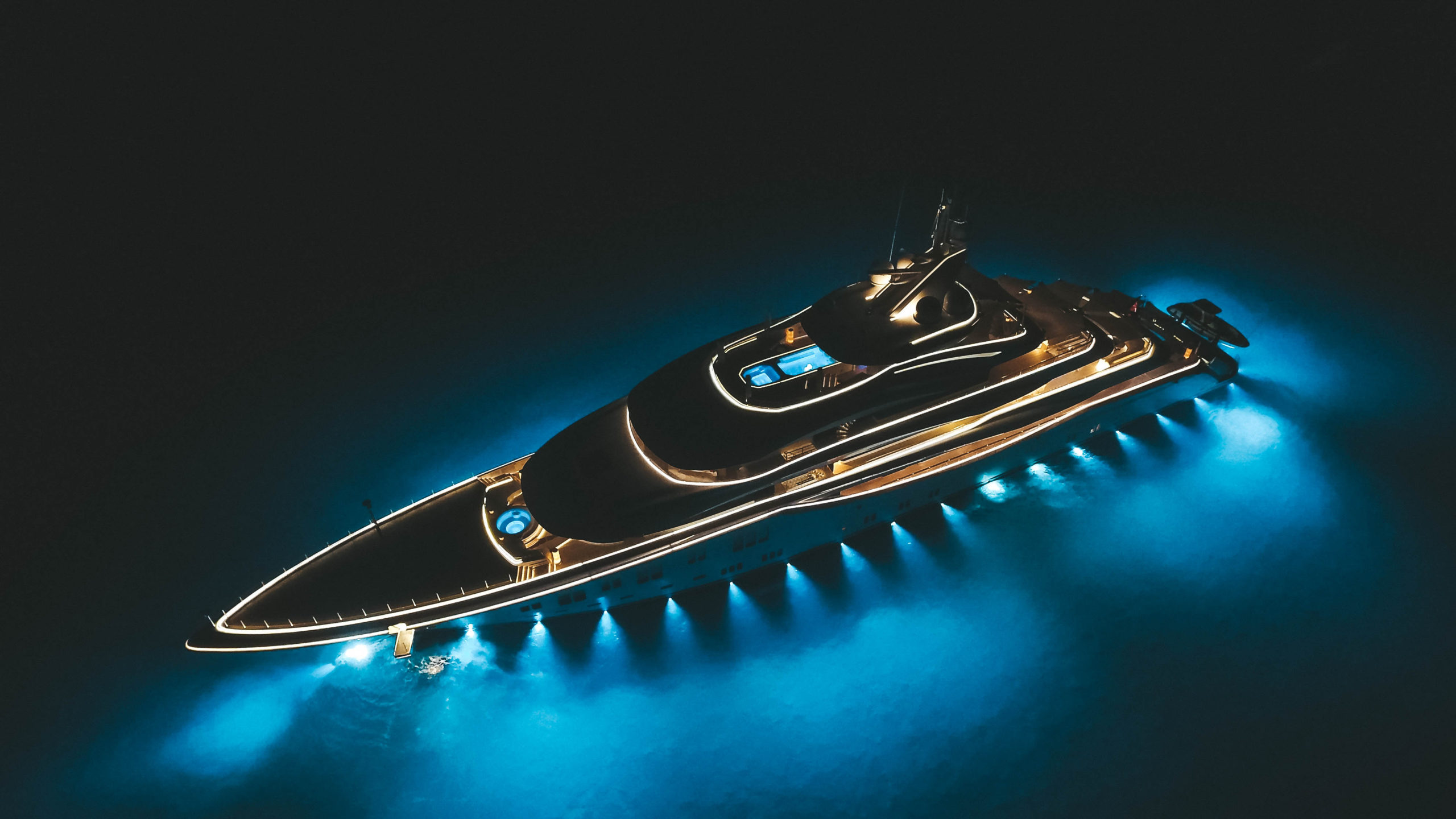
The true cost to own a yacht is an area of concern for many prospects of yacht ownership. And it should be.
Maintenance costs, exploitation costs, total cost compared to yacht charter, we detail in this article the expenses (especially the hidden ones) you have to consider before buying your first yacht !
We also provide you several solutions to lighten your investment and reduce the cost to own your yacht.
If you are looking for the price of a yacht charter (rental), please read this article instead .
How much is a yacht?
Before diving into the expenses that comes monthly, yearly or every decades once you own a yacht, let’s answer the elephant in the room: How much is a yacht (alone) in the first place? The short answer is… it depends, of course. But in most cases, the longer the yacht, the higher is her selling price.
Generally speaking, you can expect to find yachts for sale in the following price ranges:
- Below 50ft (15m): between 500K – 2,500,000 € / USD
- Between 50-70ft (15-21m): between 2 millions and 6 millions € / USD ( See our 9 catamarans for sale under 6 millions here )
- Between 70-100ft (20-30m): between 6 millions and 20 millions € / USD
- Superyachts over 100ft (30m): minimum 10 millions € / USD
You can always find exceptions to the rule and find cheaper or more expensive yachts for sale outside of these price brackets.
A lot of factors come into the selling price of a yacht: supply and demand, brand / model reputation, age and condition of the vessel, urgency or lack of for the sale and so on.
What are the main hidden costs that come with yacht ownership?
You probably already guessed it, the cost of owning a yacht doesn’t stop at its purchase price . In some cases, the price you bought your yacht at can seem like a bargain, but it really isn’t once you start adding all the hidden costs, and many of them come yearly.
Here are the main ones you should be wary of.
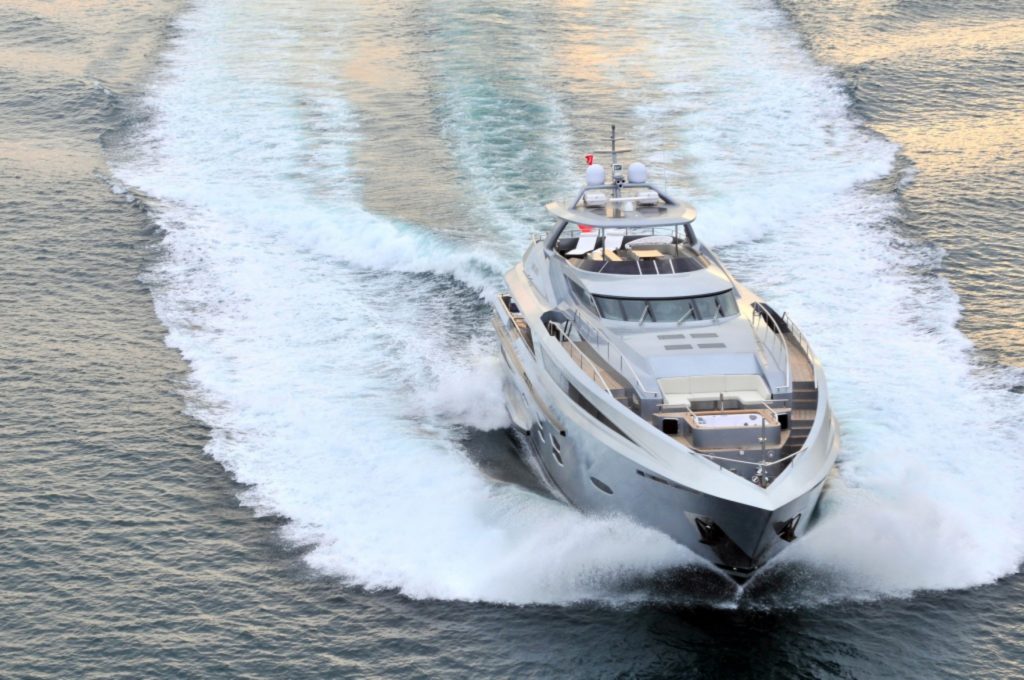
Yacht exploitation and running costs : always calculate them carefully before buying your yacht
It always cost you money to exploit your yacht.
When you are chartering a yacht, a part of these operation costs is included in your APA (Advanced Provisionning Allowance) .
When you own a yacht, these costs still apply , but you will have to pay directly for them.
Among the main operation costs, the most important are usually the following:
- The fuel: its cost will depend on the type of boat, her fuel consumption, the region, and the distances traveled;
- The mooring fees which depends on the area but also on the boat size;
- The crew, if you need it. The cost will depend on the frequency and the crew’s size;
- The communication fees;
- The food and beverages supplies;
- All the expenses related to your leisure activities.
Yachts maintenance: a cost that you should definitely not overlook
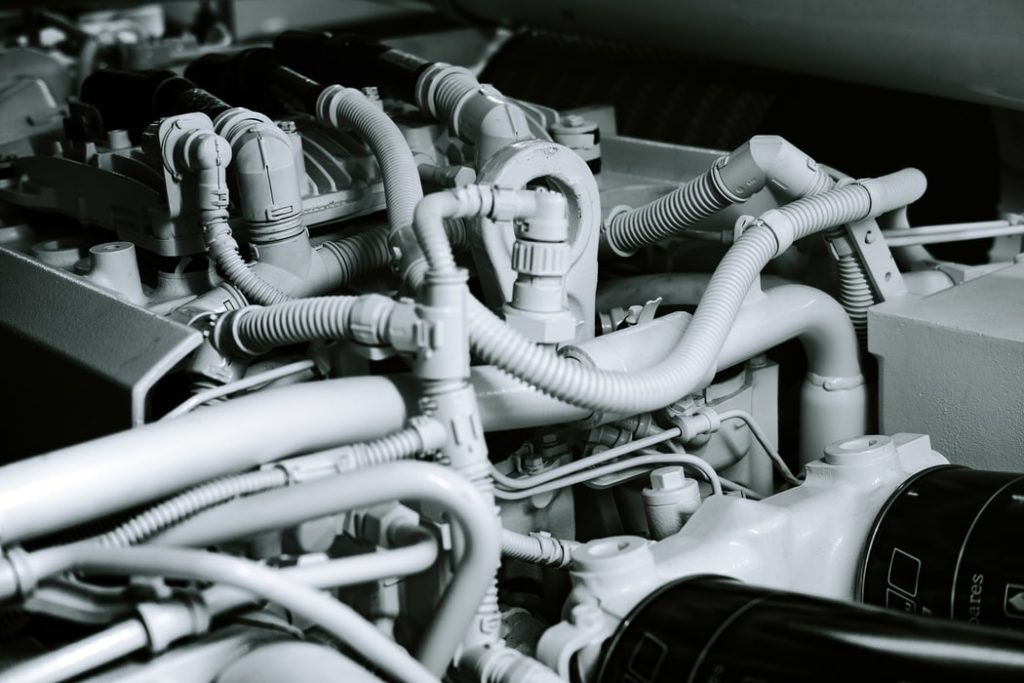
Even outside of its operating period, it still costs you money to own your yacht!
Maintenance of your boat isn’t an option and must be done on an ongoing basis. The price vary depending on the type of yacht you are owning (motor, sail, etc…), the size of the vessel, but also how old she is.
The maintenance costs include :
- The regular maintenance of certain equipment, like engines, thrusters, sails, rigging, safety equipment, hull(s) (fairing)…;
- The occasional maintenance operations in case of breakdown or damage;
- The painting;
- The cleaning and the specialized maintenance products (for teak, leather, …).
The costs of maintenance and upkeep will obviously not be the same if you do it yourself or if you call in specialists. But regardless, you should have a budget buffer dedicated to maintenance costs when you plan on buying a yacht, especially if she already had a long sailing life.
The taxes and insurance premiums of a yacht: a cost that most forget
Consider the different taxes (at the purchase and annual) and the yearly yacht insurance that you have to pay. A specialized insurance policy is generally estimated at between 0.8% and 1.2% of the boat’s purchase price per year.
Must Read : Yacht Insurance : The Definitive Owner’s Guide
Yearly harbor fees : a very important hidden cost of yacht ownership
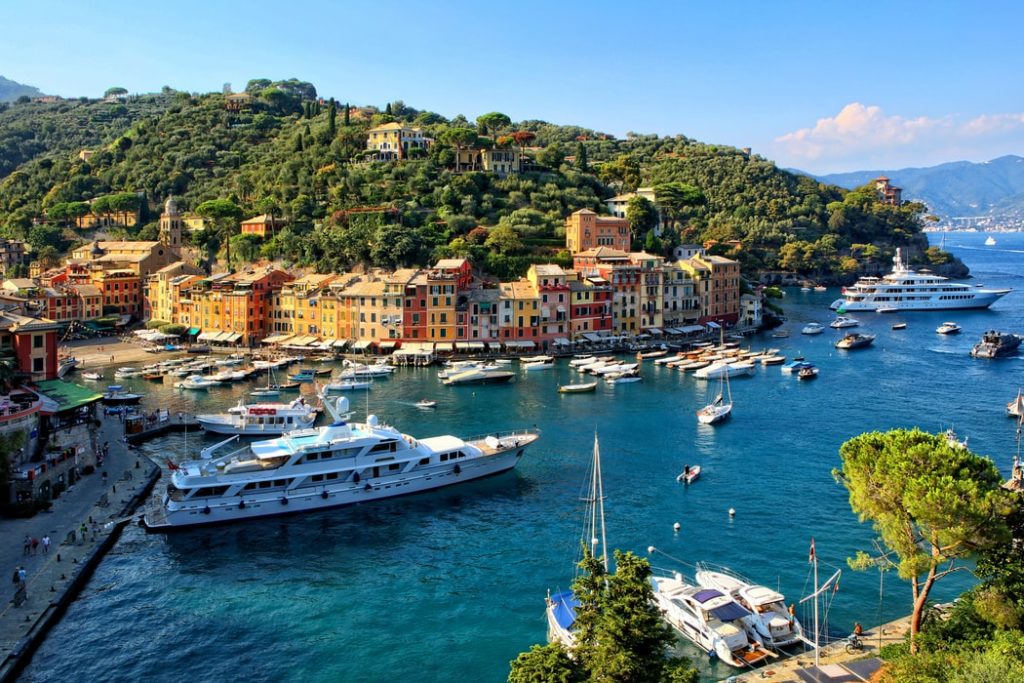
The port and/or winterization fees are also a big part of yacht ownership costs that you should carefuly estimate.
Depending on your region, you may need to consider “dry-docking” your boat, which involves handling, transport, and storage which can be really expensive.
If you can leave your yacht in the water all year round, you will need to go for a harbor ring concession.
Depending on the marina and its infrastructure, the region, and your boat’s size, the costs may considerably vary from a few hundred dollars to thousands of dollars a month . However, it is easy to obtain this information from marinas once you have chosen which yacht to purchase.
The depreciation’s price of a yacht
A yacht, like a car, will depreciate . It is difficult to estimate the depreciation, as it depends on economic conditions, exchange rates, price inflation when new, the type of boat, and the shipyard.
However, it is reasonable to estimate a minimum depreciation of 10% in the first year, then 7% in the following years. From the fifth year on, the depreciation tends to slow down. On the other hand, the operating costs increase.
Summary of the main operating and maintenance costs of owning a yacht
So, to sum up, how much does it cost to own a yacht? It largely depends on your type of yacht and your location.
But in general, owning a yacht will cost you between 10-25% of its value annualy . The longer the yacht, the likelier you are to be at the end of the spectrum.
Here are the reasonable costs you could consider:
- 10% of its value annually for a 60ft (18m) / 1 million USD yacht and below (=max 100K / year)
- 20% of its value annually for a 100ft (30m) / 10 millions USD yacht and above (=min 2 millions / year)
These brackets of total costs include everything: usual yacht maintenance, upkeep and operating costs that will be distribued as follow:
- Communication
- Maintenance
- Insurance premiums
- Harbour fees
- Cost of depreciation
Are you worried? Do not. Luckily, there are numerous ways to decrease the overall cost of yacht ownership and still enjoy yachting as it should be. Read the next paragraphs to know these valuable tricks.
If you liked this article you will also like : HOW MUCH DOES IT COST TO CHARTER A YACHT?
How to reduce the cost of yacht ownership?
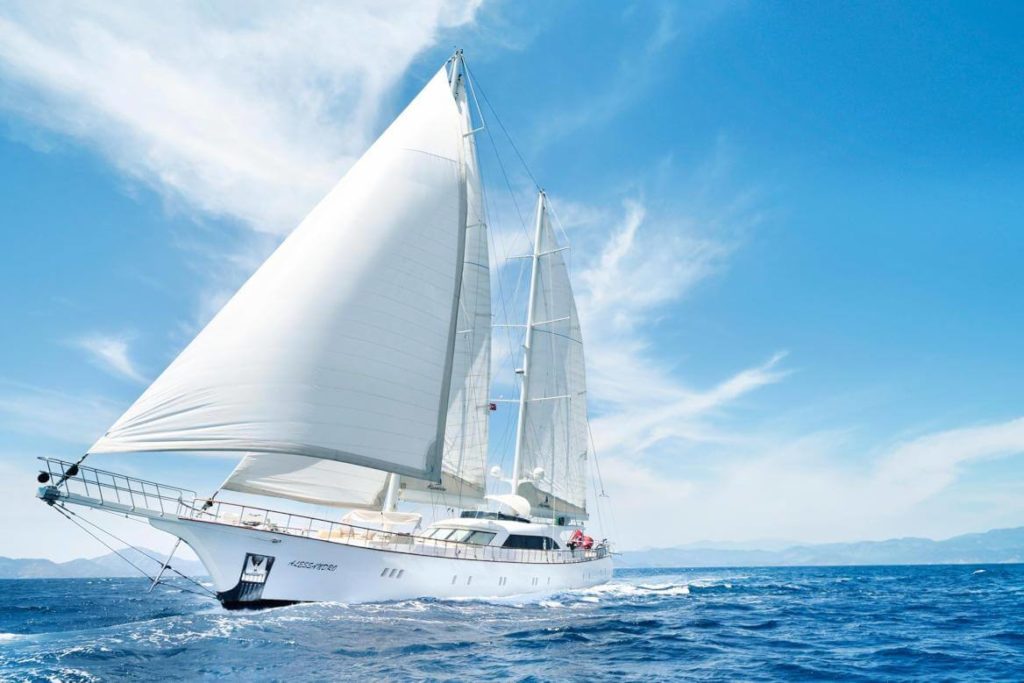
A yacht keeps on costing money even when not in use, so the best way to make it a more profitable investment is to increase its exploitation.
Renting your own yacht : a good way to reduce the costs of owning a boat
When you are not using the boat, you can earn income by renting it out. The rental price depends on the type and size of the boat, but also its location. While making money from renting is possible, don’t expect to pay back all your expenses. Nevertheless, it will help you in avoiding your yacht becoming a financial burden.
The easiest way to do this is to hire a professional charter company to help you. If you go for a reputable and experienced company, you will benefit from their expertise and contacts. It will also save you from legal, insurance, and withdrawal issues and avoid red tape.
On the topic : Yacht to Charter : Can It Be Profitable?
Fractional yacht ownership: share the cost of owning a yacht with co-owners
Another solution to own a yacht at lower cost is fractional ownership of a boat , which means that you own a fraction of it. It can be half, a quarter, or even less. For a long time, boaters have been opting for this option of partial ownership with friends or family. These days some companies create formalized fractional ownership arrangements for more guarantees.
For example, in partnership with the Windward Islands, SAILING RESORT proposes fractional boat ownership on the fabulous trimaran, the LEEN 72’. So you can become a co-owner of the new hybrid-powered multihull which can accommodate up to 10 passengers and 4 crew members. You will enjoy private use of the trimaran (depending on the period) from 6 to 12 weeks during the first 5 years.
This program proposes a profitable commercial operation with 24/7 premium service. It is a tailor-made solution for all those who want to feel like owners of a prestigious yacht for a few days a year while limiting their investment and responsibilities. WI manages the operation of the yacht for you out of your personal use, like the charter’s organization, maintenance, insurance, annual mooring, and all other administrative tasks.
Once you have weighed the pros and cons and have the means to finance both the purchase and the annual costs (maintenance, operation, …) of your yacht, you should go for it! Indeed, if you can evaluate the hidden costs and expenses of owning a boat, the freedom and unforgettable memories are priceless.
Yacht Charter remains a cheaper alternative than yacht ownership in many cases
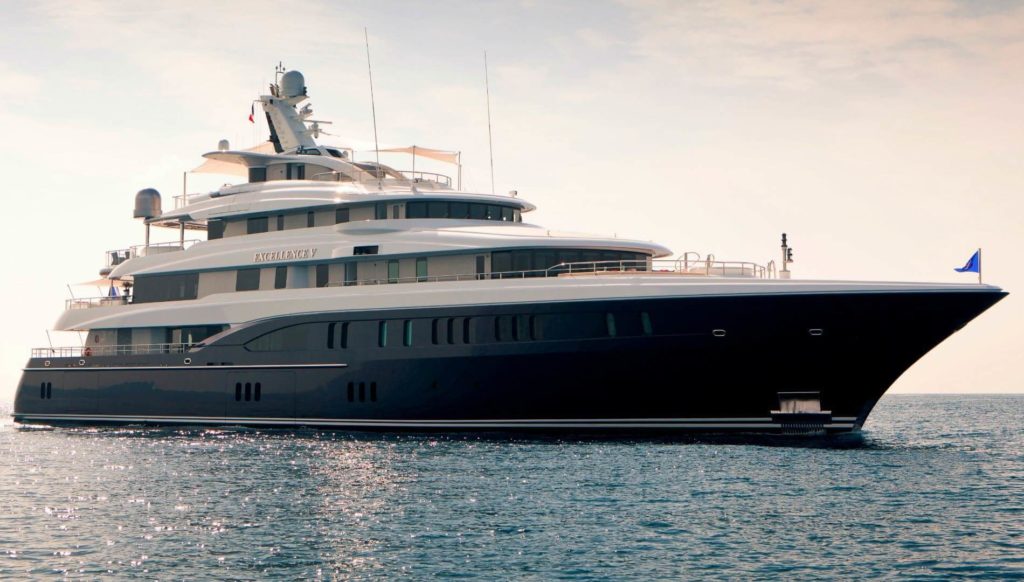
If you can’t enjoy your yacht frequently or are still unsure about whether it’s worth the cost or not to own a yacht, you might consider chartering instead. This will allow you to try out different models , from various shipyards, and see which ones you prefer.
Therefore, the cost of renting a yacht will save you from having to worry about all those hidden costs of owning one. All you have to do is pay for your charter, your cancellation insurance and set your APA during your stay. This way, you only pay money, time, and effort when you use the boat.
What is the (true) cost of chartering the yacht you've seen? 💰⛵
The advertised prices of all charter companies do not include APA, VAT & other variable costs.
Use our calculator to get a 100% FREE estimate of the REAL total cost of your next yacht charter! ⬇
Read also : SUSTAINABLE YACHTING: HOW IS THE BOAT INDUSTRY BECOMING MORE ECO-FRIENDLY?

Frequently asked question
For a 60-foot or million-dollar yacht, the cost per year will be about 10% of its value or $100,000 per year.
You should expect to pay about 20% or more of the original price of your boat to run it annually. So, for a $10 million yacht, the cost to operate will be about $2 million per year, including fuel, insurance, dock fees, maintenance and repairs, crew, etc.
A 180-foot superyacht and/or mega yacht costs a minimum of $4.75 million per year to operate and maintain. Kitty McGowan of the US Superyacht Association estimates an annual budget of $1 million for maintenance and repairs, $350,000 for dockage, $240,000 for insurance, $400,000 for fuel, and $1.4 million for the crew. Add another 15-25% of the vessel’s value for V.A.T.
Once you have weighed the pro and cons, if you can afford the purchase and all the hidden annual expenses, have found your dreamed yacht, and have time to enjoy it, you should go for yacht ownership!
It is not the best way to make money, but you can minimize your annual expenses by renting it or opting for fractional boat ownership.
It’s hard to tell. As long as you have the money and enough time to enjoy it, it is worth owning a yacht! Everything cannot be estimated. For example, it will bring you invaluable freedom and happiness.
One of the easiest way to reduce the maintenance cost of a yacht is to fractional yacht ownership. That way, the maintenance expenses are spread among co-owners according to their shares.
It varies greatly depending on the size of the yacht. For a yacht of 60ft (18m), you will likely spend around 10% of its purchase value each year in maintenance and exploitation costs.
Luxury yachts have maintenance and operation costs that are around 10% of their value yearly. So if a yacht value is 2 millions USD, its maintenance and operations costs should be around 200K / year.
Operating a sailboat is usually 20-40% cheaper than the same size motoryacht. Motoryachts tend to be more expensive to operate than sailboats as the fuel consumption can become an important expenditure fast.
A small yacht below 50ft is usually for sale between 500K and 2,5 millions USD / €. A mid-size yacht between 50ft and 100ft is usually for sale between 2-15 millions USD / €. Above 100ft, the selling price is rarely below 10 millions USD / €.

What is a Yacht Club? Benefits & Features Explained
Buying a yacht : the frequently asked questions, you might also like.
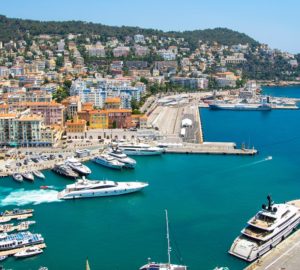
What differentiates a yacht from a superyacht or a mega yacht?
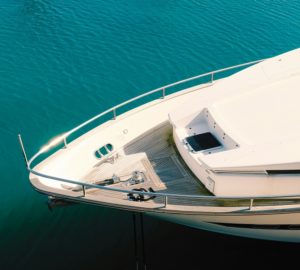
Chartering Requirements and Regulations: A Guide for Boat Owners

What are the Fastest Cruising Catamaran on the Market?
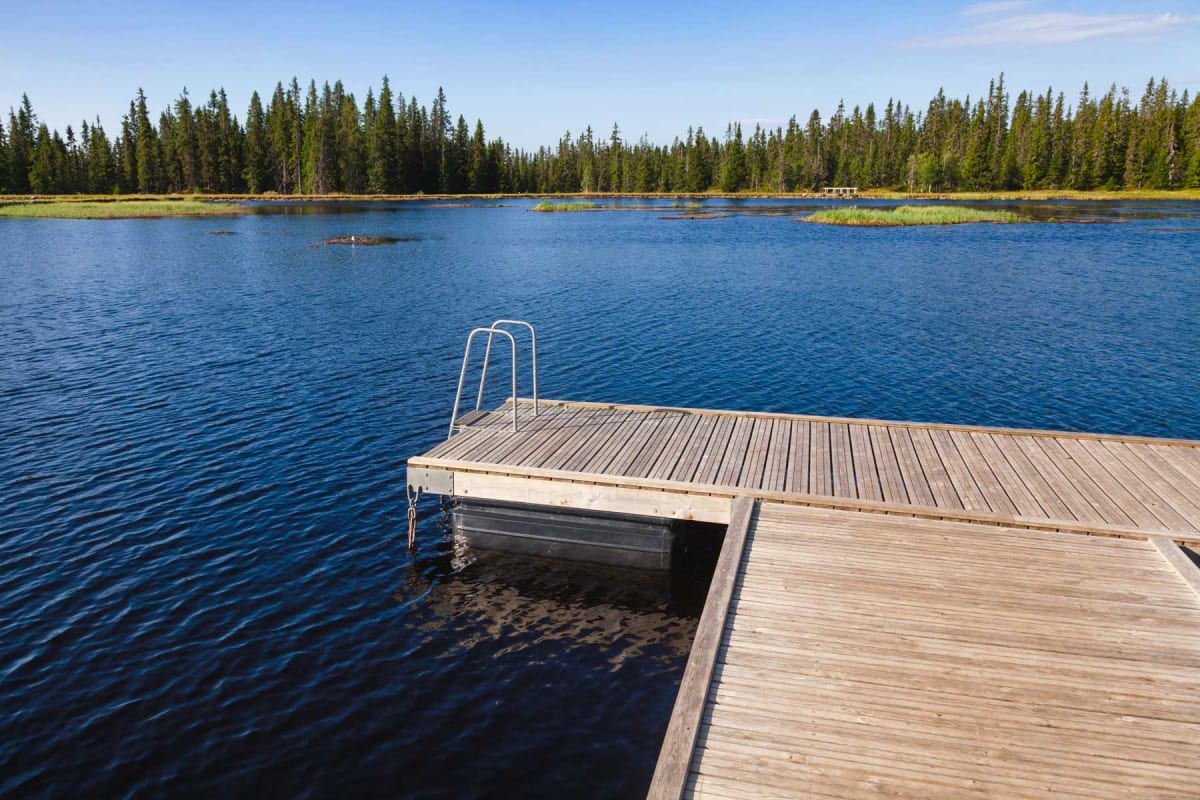
How much does a dock cost?
$15 – $60 dock cost per square foot installed, $3,000 – $30,000 average total cost to build a dock.

Cost to build a dock
A boat dock costs $15 to $60 per square foot installed or $3,000 to $30,000 on average, depending on the size, material, type, and features.
A floating dock costs $15 to $35 per square foot . Building a fishing pier costs $100 to $300 per linear foot . Boathouse construction costs $10,000 to $40,000 .
Boat dock prices calculator by type
Boat dock prices vary depending on the type:
*For an average dock of 200 to 500 SF.
Stationary docks are attached to the waterbody floor, increasing installation costs. These fixed docks are used in choppy water or lakes where the water levels remain stable.
Removable docks float or rest on the waterbody floor and may be temporarily secured with anchors. Movable docks are ideal for deep water, frequently changing water levels, or where the floor can't support a fixed dock.
Floating dock cost
A floating dock costs $15 to $35 per square foot . A platform is constructed over airtight barrels that rise and fall with changing water levels. Floating docks are easily removed and stored and have fewer permitting requirements since they do not damage the sediment.
Modular docking systems are lightweight floating cubes that connect like building blocks. The cubes are easily reconfigured for unusual docking situations.

Pilings dock cost
A piling dock costs $20 to $40 per square foot installed. Large posts are sunk 4 to 8 feet into the ground to create a permanent foundation for the decking material.
Marine-grade, pressure-treated wood is used for freshwater docks, while synthetic fiberglass and concrete are used for saltwater.
Dock builders install the posts by jetting, hammering, or drilling them into the ground, depending on the bottom conditions.
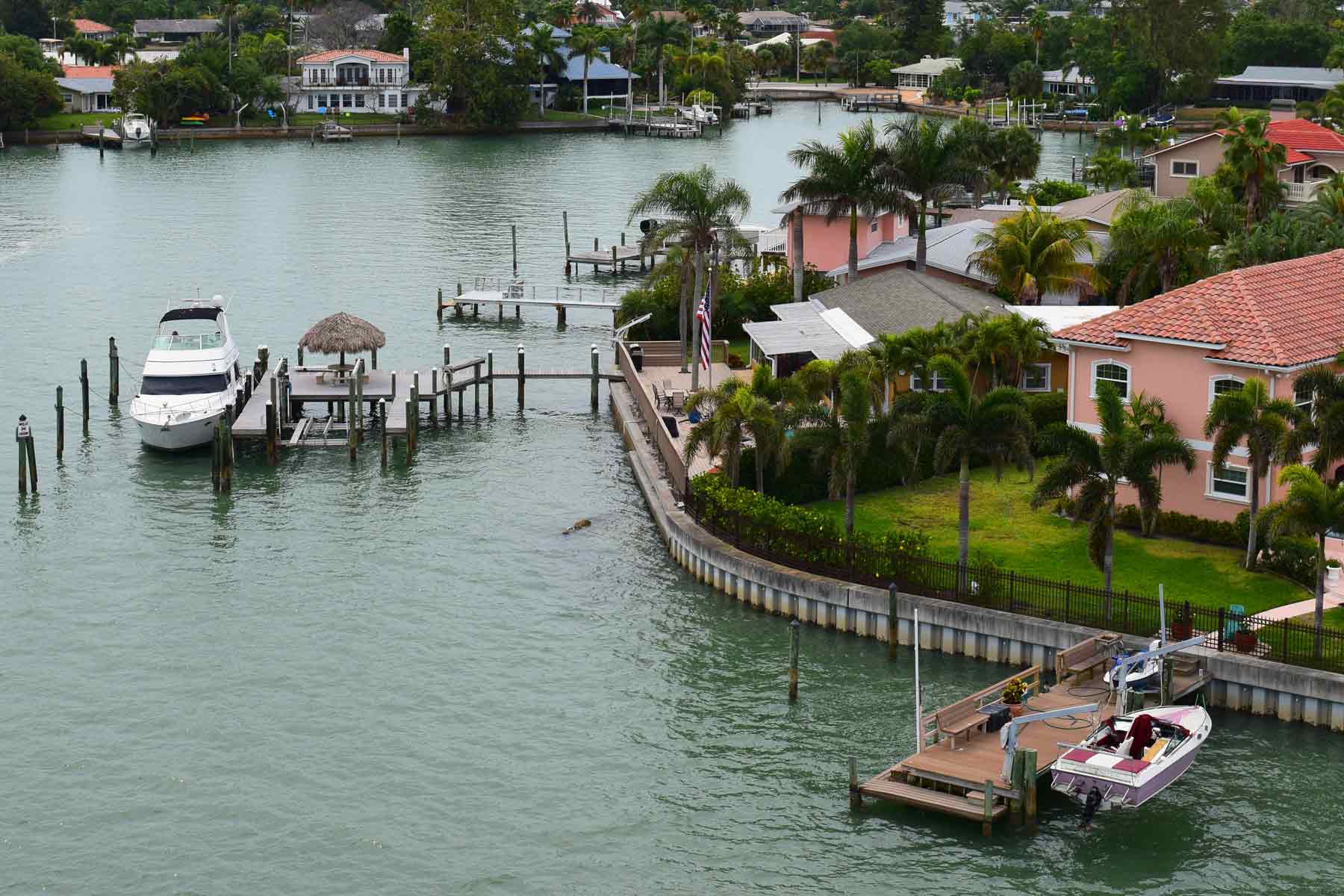
Aluminum pipe dock price
An aluminum pipe dock costs $1,000 to $7,000, depending on the size installed. The lightweight dock stands on legs but is not permanently anchored, allowing easy DIY installation and removal before the winter freeze.
Pipe decks are best used where the lake bottom is firm.
Double-decker boat dock cost
A double-decker boat dock costs $15,000 to $50,000 installed. The structure offers covered protection for watercraft on the first level and expansive sunbathing and entertainment space on the second level. Homeowners often add custom features like slides and diving boards to deep-water docks.

Crib dock prices
Crib dock prices are $10,000 to $50,000 for the permanent structure. Wooden frames or crates are filled with large rocks and covered with decking to function as a shoreline extension. The docks are sturdy and stable but cannot be removed or easily extended.
Crib docks are prohibited in many areas because they cause long-term environmental problems by disturbing the natural flow of water and wildlife along the shoreline. They also create water flow issues in flood-prone areas.
Suspension or cantilevered articulating docks
A suspension or cantilevered articulating dock costs $5,000 to $25,000 , on average. The structure is anchored at the shoreline with a cantilevered section suspended over the water by cables. The hinged section is easily lifted from the water for maintenance and winter storage.
Wheel in or rolling dock prices
Wheel-in docks require a gently sloping shoreline for easy installation and removal. Rolling docks are most stable in a waterbody with a firm, sandy bottom.
Concrete dock system cost
A concrete floating dock system is used for commercial marinas, providing nonskid surfaces and jointed panels for a safe and stable walking platform. Concrete lasts longer than most other dock materials and is suitable for freshwater and saltwater installations.
Cost to build a boathouse or covered dock
A boathouse or covered dock costs from $10,000 to $45,000 , depending on the design and features. The roof-covered structure is used to shelter watercraft and store other marine equipment.
Luxury boathouses are often equipped with boatlifts to raise the boat out of the water when not in use.
Covered docks with a flat sundeck are cheaper than fully-enclosed boathouses with hip or gable roofs.
Custom features like plumbed outdoor kitchens, fireplaces, and guest suites significantly increase installation costs.

Cost to build a pier
Building a pier costs $100 to $300 per linear foot . A residential pier is typically 4 to 6 feet wide and extends over the water. A pier is designed as a walking or fishing platform rather than a docking area for boats.
Cost factors to install a boat dock
Boat dock installation cost factors include the size, design, materials, and accessories like boat lifts, ramps, bumpers, and ladders.
*Not including installation.
Other factors that impact the cost of installing a boat dock include:
Dock type – Prefabricated docks are cheaper than custom-built ones but are not engineered for the specific property.
Dock installation – Permanent docks have higher labor costs, while removable docks are often a simple DIY installation.
Dock size – The average dock length varies by location. Most municipalities restrict dock length to 1/3 the width of the waterbody. Extra-wide walkways or large entertainment decks increase the material and labor costs.
Dock material – Wood docks are budget-friendly but require regular maintenance. Composite decks are the most expensive but have the longest lifespan.
Dock shape – Complex dock designs increase costs due to longer planning and building time.
I-shape docks are the most common configuration with one straight extension over the water.
L-shape docks add a horizontal decking piece for chairs and lounging.
T-shape docks create protected areas for personal watercraft on both sides of the dock.
H-shape docks provide separate zones for swimming, fishing, and watercraft.
E, F, and U-shape docks offer the most storage options for watercraft.
Salt vs. Freshwater – Saltwater installations need corrosion-resistant materials like polyethylene or marine-grade aluminum. Most materials are suitable for freshwater.
Climate and location – Waterbodies that freeze in winter require a removable dock installation. A floating dock is more likely to survive the wind and waves in hurricane-prone areas.
Water depth – Shallow water allows for easy installation of a permanent dock. Deep water and water levels that change frequently require a floating dock.
Bottom conditions – Firm sand allows for easier permanent installations, as loose sand cannot support pilings or pipes. Rocky conditions make permanent installations more difficult and costly. Wetland areas have greater environmental concerns and regulations.
Permits – Boat dock installation typically requires permits from local, state, or federal agencies.
Shoreline stabilization – A seawall or bulkhead costs $150 to $600 per linear foot to protect waterfront properties against storm surges and coastal erosion.
Labor cost to build a dock
Labor costs to build a dock are $40 to $110 per hour and account for nearly half the total cost. Larger docks take more time to build, and complex dock layouts require additional labor hours for design planning.
Electricians cost $50 to $130 per hour to run electrical wires for mooring or lifting mechanisms and dock lighting.
Dock designers use computer software or CAD drawings to determine the appropriate dock size, shape, and load.
Marine inspectors often use underwater drones to determine the water depth and bed composition for the proper pile length and spacing.
Dock builders often employ the services of an environmental engineering team to assess the project's environmental impact.
Dock decking prices by material
Dock decking costs $4 to $15 per square foot for materials alone. Pressure-treated wood decking costs $5 to $8 per square foot and requires regular sanding, sealing, and staining.
Composite decking costs $16 to $32 per square foot for materials but lasts twice as long as real wood with minimal maintenance.
Boat lift installation cost
A boatlift costs $1,000 to $8,000 on average. A boat lift raises the boat out of the water when not in use to protect it from damaging algae, salt, waves, and wind. A Personal Watercraft (PWC) lift raises and stores smaller watercraft like jet skis, kayaks, or small boats.
Floating drive-on docks work in most water depths and are not impacted by fluctuations in water level.
Freestanding lifts are portable and operate in water from depths from 8 inches to 6 feet.
Dock-mounted lifts attach directly to the dock and raise or lower the watercraft with a handle or button push.
Boat ramp cost
A boat ramp costs $1,000 to $5,000 installed. The sloped surface allows homeowners to launch small watercraft from a trailer. A private boat ramp is costly to install and maintain and may not be permitted by many municipalities.
Lake vs. river dock construction costs
Riverfront homes require a fixed, permanent installation, like a piling dock that costs $4,000 to $20,000 or a crib dock that costs $10,000 to $50,000 . A less expensive floating dock costs $3,000 to $17,500 on average and is suitable for lake homes with calmer water.
Seasonal dock removal cost
Seasonal dock removal costs $2 to $4 per square foot to pull the dock from the water before the winter freeze. Dock service companies often charge $125 to $150 minimum fees with higher rates for out-of-area service.
Seawall or bulkhead cost
A seawall costs $150 to $600 per linear foot for vinyl, steel, concrete, or wood. A seawall retains the shore and protects against waves. Ocean seawalls cost more than lake bulkheads which resist only the smallest waves.
Dock cost by brand
Dock prices vary depending on the dock style, material, size, and brand. Some popular dock brands include:
DOCK BLOCKS™ cost $40 to $45 per square foot or $9,000 to $16,500 for a 200 to 400-square-foot dock. DOCK BLOCKS™ are commercial-grade floating plastic blocks that connect to create a floating dock. The dock is easily assembled by the homeowner and includes a lifetime warranty.
EZ Dock sections cost $30 to $50 per square foot and come in 3.5’x5’ to 6.5’x10’ sizes. EZ Dock is a modular floating dock with multiple shapes and anchoring options for easy configuration and DIY installation. EZ Docks are eco-friendly, long-lasting, lightweight, and low maintenance.
BROCK DOCK® is a system combining weather-resistant vinyl decking with a clip-strip fastening system. The hidden screws allow for natural expansion and contraction with changing temperatures.
Boat dock FAQs
How much does it cost to rent a boat slip.
Renting a boat slip in a marina costs $2 to $3 per hour for day visits or $4 to $6 for overnight stays. A boat slip is a single parking space typically enclosed on three sides, forming a U shape. Slips have multiple mooring points to keep the watercraft securely in place.
How much does it cost to dock a boat or yacht?
The cost to dock a boat is $20 to $29 per foot per month on average. Marinas charge higher rates for docks with electricity and Wi-Fi access.
How much does it cost to repair a dock?
Boat dock repairs cost $100 to $2,000 for minor to moderate damage. Refinishing or replacing several rotten boards is easier and cheaper than repairing major storm damage or foundation issues.
How long does it take to build a dock?
Dock construction takes a minimum of 4 to 6 weeks , depending on the permits and the dock design. Bigger, more complex docks and boathouses can take 12 weeks or more to plan and build.
How far out can I build my dock?
Permits vary by state and municipality, but a common length restriction is 1/3 the distance across the waterway to ensure the dock does not impede vessel traffic.
Can you insure a boat dock?
Boat docks are insured under the Other Structures (Coverage B) portion of a home insurance policy when the dock is attached to the primary residence property. An off-site dock requires an endorsement to be added to the policy. Docks are typically not covered for hurricane, flood, or freeze damage.
Getting estimates from professional boat dock builders
When hiring a boat dock builder, be sure to:
Select insured and bonded contractors that have been in business for more than five years.
Browse their reviews on HomeGuide and Google.
Get at least three estimates with similar materials and equipment to compare.
Avoid selecting the lowest quote as quality may suffer.
Get a detailed estimate, contract, and warranty in writing before the work begins.
Never pay in full before the project starts. Follow a payment plan instead for work completed.
Questions to ask
What experience do you have with building boat docks?
How many boat docks have you completed in the last year?
Are you licensed, bonded, and insured?
Do you recommend a removable or permanent dock for my property, and why?
How long will the installation take?
Will the installation require a permit, and if so, will you obtain it?
Do you guarantee your work or offer an extended warranty?
What kind of maintenance will the dock require?
Do you offer seasonal dock removal services?
May I have a copy of your insurance policy for my records?
Will you provide a list of references with contact information?

How the U.S. military will use a floating pier to deliver Gaza aid
Construction will take up to two months and require 1,000 u.s. troops who will remain off shore, officials say. once complete, it will enable delivery of 2 million meals daily..

The U.S. military anticipates that a floating pier, to be built off Gaza’s coastline in coming weeks, will enable delivery of 2 million meals daily to Palestinians facing starvation, the Pentagon said Friday, describing its plan to address the worsening humanitarian crisis there without deploying American personnel directly into the war zone.
Construction of the offshore pier and causeway connecting it to land will take as long as 60 days and require about 1,000 U.S. troops, Maj. Gen. Patrick Ryder, the Pentagon press secretary, told reporters.
President Biden announced the initiative during his State of the Union address Thursday, as hopes dim for a another cease-fire in Israel’s five-month war with Hamas and his administration contends with withering criticism for the vast supply of U.S. weapons that have contributed to the conflict’s massive civilian death toll. It’s one element of a broader “maritime corridor” that the United States and other countries have pledged to establish amid growing concerns about the situation.
Israel-Gaza war

The perceived need for the floating structure is a reflection of the political land mines that have stymied efforts to get humanitarian aid to those trapped by the fighting.
Israel’s deep-water port at Ashdod is less than 25 miles from Gaza, but Israeli officials have refused to open its northern border crossing. Egypt’s El Arish port, just south of Gaza, has been a key arrival point for assistance. But all shipments must go through a laborious process of loading onto trucks that travel to an Israeli inspection site, only to be unloaded and reloaded again to then join an ever-growing line of vehicles waiting to enter the Palestinian territory.
About 576,000 people — more than a quarter of the enclave’s population — are on the brink of famine, United Nations officials said . Gaza’s Health Ministry said earlier this week that at least 20 people there have died of malnutrition and dehydration.
There is “dire, urgent need” for relief, Ryder said in outlining what he characterized as an “emergency mission” still being finalized.
U.S. troops, including the Army’s 7th Transportation Brigade based in Virginia, will take part in the effort. The operation will include construction of a floating pier at sea that will allow ships to deliver aid, which will then be loaded onto Navy support vessels and offloaded onto a floating causeway. The two-lane causeway, about 1,800 feet in length, will be steered onto a landing site ashore and secured to the ground by non-U.S. personnel whom Ryder did not identify. Trucks will then access the causeway to pick up and haul the aid.
Washington is coordinating with other countries in the region, the United Nations and humanitarian groups to determine how the aid will be distributed once it arrives on land, Ryder said. American personnel stay either on the causeway or on the ships, he said.
Asked whether the Pentagon believes Hamas fighters will target U.S. forces operating offshore, Ryder said that’s “certainly possible.” He added that, “If Hamas truly does care about the Palestinian people, then … one would hope that this international mission to deliver aid to people who need it would be able to happen unhindered.”
Biden told reporters Friday that Israel would provide security for the effort. Ryder said the military units involved would have their own force-protection capabilities.
Aid will be routed through Cyprus , where the goods will undergo inspection by Israel.
Deliveries of non-U.S. humanitarian aid to Gaza by sea could begin this weekend, a senior European official said earlier Friday. European Commission head Ursula von der Leyen said that the besieged enclave faces a “catastrophe.”
“That is why today the Republic of Cyprus, the European Commission, the United Arab Emirates and the United States — of course also supported by other critical partners — announced our intent to open the maritime corridor to deliver much-needed additional amounts of humanitarian assistance by sea,” she said.
World Central Kitchen , a relief group founded by chef José Andrés , is providing food aid for the mission, as well as “teams in Cyprus and Gaza,” he wrote on social media.
Several logistical and security challenges are expected as the program is begun, according to Jamie McGoldrick, the U.N. humanitarian coordinator for the occupied Palestinian territory. “What happens after the aid arrives at the harbor? How does it get on trucks and out to distribution? Those are questions that I don’t think have been answered yet,” he said.
Relief efforts in Gaza are already overstretched, as trucks and fuel remain in short supply. And once the aid makes it to shore, it will face the same distribution challenges as aid that reaches the territory by land.
“The problem we are facing right now is that many of the roads are not operational, or on the roads that are open, it’s difficult to get though the crowds and congestion,” McGoldrick said.
The floating pier operation has underscored the limits of airdropping aid, a complex mission dangerous to civilians below and one that provides relatively little relief in a situation like the Israeli war in Gaza .
Five people were killed and 12 injured there on Friday, said Mahmoud Bassal, Gaza’s civil defense spokesman, after an apparent parachute malfunction caused a loaded crate to fall on some people. Ryder disputed reports that an airdrop from a U.S. aircraft was to blame.
“All of our aid bundles landed safely on the ground,” Ryder said, adding that initial reports of the incident came shortly before U.S. aircraft sent their loads out of C-130 aircraft.
The United States will continue precautions to reduce risk, Ryder said, like limiting pallet weight, identifying drop zones with fewer people and sending messages to civilians before dropping the aid.
Victoria Bisset, Cate Brown, Karen DeYoung and Susannah George contributed to this report.
Israel-Gaza war: Israel’s military said it was carrying out a “precise operation” at Gaza’s al-Shifa Hospital , citing Israeli intelligence that the complex was being used by senior Hamas militants. The Gaza Health Ministry said communications were cut and reported people killed or injured. Meanwhile, at least half the population in Gaza is facing what the United Nations has repeatedly described as “ famine-like conditions .”
Middle East conflict: Tensions in the region continue to rise. As Israeli troops aim to take control of the Gaza-Egypt border crossing, officials in Cairo warn that the move would undermine the 1979 peace treaty. Meanwhile, there’s a diplomatic scramble to avert full-scale war between Israel and Lebanon .
U.S. involvement: U.S. airstrikes in Iraq and Syria killed dozens of Iranian-linked militants , according to Iraqi officials. The strikes were the first round of retaliatory action by the Biden administration for an attack in Jordan that killed three U.S. service members .
- Is Gaza heading into famine? How experts define that grim term. March 18, 2024 Is Gaza heading into famine? How experts define that grim term. March 18, 2024
- White House says Israel lacks ‘coherent and sustainable strategy’ in Gaza March 18, 2024 White House says Israel lacks ‘coherent and sustainable strategy’ in Gaza March 18, 2024
- Israeli forces raid Gaza City hospital; U.S. confirms death of top Hamas leader March 18, 2024 Israeli forces raid Gaza City hospital; U.S. confirms death of top Hamas leader March 18, 2024

GameSpot may receive revenue from affiliate and advertising partnerships for sharing this content and from purchases through links.
This Highly Rated Steam Deck Docking Station Is Just $34 Right Now
The dock also works with the ASUS ROG Ally, Lenovo Legion GO, and other handheld PCs.
By Jon Bitner on March 20, 2024 at 8:18AM PDT
It's not Prime Day, but Amazon is running another great event right now--the Big Spring Sale . Hundreds of items are seeing great price cuts, but if you own a handheld PC like the Steam Deck or Asus ROG Ally, you'll want to take a look at this 8-in-1 Docking Station , as it's down to its lowest price ever and comes with a nice 18-month limited warranty.
iVanky 8-in-1 Docking Station for Steam Deck, ASUS ROG Ally, And More
$34 (was $50).
The iVanky 8-in-1 Docking Station is designed to fit most handheld PCs. This includes Steam Deck , ASUS ROG Ally , Lenovo Legion Go , and the MSI Claw . It supports 4K resolutions at 60Hz refresh rates, and comes with a wide array of ports (USB, HDMI, ethernet) so you can easily connect all your accessories. It also supports up to 1000W power delivery, making it easy to charge your gear while you game on the big screen.
As a bonus, the docking station comes with a few extra joystick caps.
Considering the official Steam Deck Dock costs $79, this is a pretty great deal. And since its universal design will work with most handheld PCs, it's a good option for folks working with anything beyond Steam Deck. Few products in the price range support 4K output, and coupled with its nice warranty and streamlined design, it's definitely worth a closer look.
If you need a handheld PC to go with your 8-in-1 Docking Station that won't break the bank, be sure to check out the ASUS ROG Ally . The base model with the Ryzen Z1 Processor is $400 (down from $600), which is the best price we've seen for the Steam Deck competitor. For something more robust, you can step up to the Ryzen Z1 Extreme Processor for $600 (down from $700).
Best Gaming & Tech Deals This Week
- Save $10 On Princess Peach: Showtime Preorders
- Paper Mario: The Thousand-Year Door Preorders Live At Amazon
- Save On The New Marvel And Star Wars Disney Plus 4K Blu-Rays
- + Show More Best Gaming & Tech Deals This Week Links (1)
- Elden Ring: Shadow Of The Erdtree Preorders Are Live
Got a news tip or want to contact us directly? Email [email protected]
- Leave Blank
Join the conversation
Use your keyboard!
Log in to comment

IMAGES
COMMENTS
An average sailboat costs between $800 - $1,800 per year. The price depends on location, season, and length of the boat. On average, a dock slip in the US costs anywhere between $12/ft per year to $240/ft per year, with an average of roughly $50/ft per year. Renting a spot at a marina is called 'renting a slip' or 'renting a berth'.
The controller, worn around your neck, allows you to become mobile while docking and managing your boat; better visibility, being able to handle lines, and to avoid costly bumps against docks or pilings. ... It's going to cost between $10,000 - $15,000, again depending on your boat's configurations and if you want that joystick feature or ...
In Croatia, yacht berthing or mooring fees range between €435 - €1050 / m per year (€145 to €350 per ft.) for a high season contract. Greece annual fees are between €225 - €525 / m per year (€75 to €175 per ft.). Monaco is one of the most expensive destinations. A berth in Monaco costs about €1500/ m per year. Country.
The yearly cost of docking for regular sailboats starts from $800 to $1 800. A dock slip can cost from $12 to $240 per foot every year. The average is around $50. Docking fees for boats vary due to their length, location, and season. Learn more of the crucial details by reading this article.
It costs $1,300 per year to dock a boat, on average, but it can cost much more. The average marina charges $10-$50 per foot per year to dock a boat. Many marinas are unable to provide an anchor and you need to buy one for $1,250 on average if you can't tether your boat to the dock.
A boat's length is typically the deciding factor in price for a boat slip. The monthly fee to dock a boat is roughly $500 a month on average in the US. Prime locations can range up to $1,000 a month or more in average prices for a dock slip. Small towns usually have some of the best dockage fees. The cost to dock a sailboat varies based ...
The cost of docking a yacht can range from a few hundred to several thousand dollars per month. For example, a small yacht (up to 30 feet) may cost anywhere from $300 to $800 per month to dock, while larger luxury yachts (over 100 feet) could see fees in the range of $3,000 to $10,000 per month or more, depending on the location and services ...
If you have a 50-foot boat, you can expect to pay a daily boat slip rental cost of $37.50 or a monthly fee of $750 (500 Baht per foot). The average docking fee in India is about 30,000 Rupees (about $403) per meter per year. A 32-foot boat can have an annual berthing fee of about $4,000.
Miami, Florida. $5/ft. $23 to $24/ft. $42/ft. Even docks in the same city have different fees. For example, docking a boat in Yacht Haven Marina in Los Angeles is $10.50 to $12.95/ft a year. On the other hand, Marina del Rey in the same city will charge $192 and $240/ft per year. The same is overseas.
And if you're buying boat dock accessories to go with your dock, like dock furniture or water sports equipment, those pieces will factor into your cost as well. Decking and Other Materials Decking can make up as much as 25% to 50% of the price of a dock, although that number can get higher, so keep that in mind when budgeting.
Labor. Labor is a large portion of the dock building costs. Many DIY kits and small, modular docks are available for $300 to $1,000, for example, while a custom-built dock costs more than $5,000. In most cases, the labor portion runs around $20 per square foot, making a 6 x 30-foot dock cost approximately $3,600.
On average, the yearly cost of docking for regular sailboats in Southern California starts from $800 to $1,800. The cost of docking slips ranges from $12 to $240 per foot annually, with the average being around $50 per foot annually. Docking fees depend primarily on the boat's length, location, and season.
A 50-foot boat is going to cost you about $5,300 (£3,800)a year, and you also have to pay £1,800 to even dock. Croatia charges around $160 to $350 (€435 to €1,050) per foot/meter for a year of docking. Keep in mind that mooring prices vary dramatically by location, even along the coast of one country. For example, if you head to the Port ...
A six-function (two engines, two thrusters, anchor and horn) with a twist remote connected to CAN bus-controlled engines will run about $12,500, but there is a litany of equipment-specific options that can influence pricing. It's best to get a quote from a Dockmate installer. ADVERTISEMENT. Thanks for watching!
A small yacht below 50ft is usually for sale between 500K and 2,5 millions USD / €. A mid-size yacht between 50ft and 100ft is usually for sale between 2-15 millions USD / €. Above 100ft, the selling price is rarely below 10 millions USD / €. previous article. Here is everything you need to know about the real cost of yacht ownership and ...
A boat dock costs $15 to $60 per square foot installed or $3,000 to $30,000 on average, depending on the size, material, type, and features. A floating dock costs $15 to $35 per square foot. Building a fishing pier costs $100 to $300 per linear foot. Boathouse construction costs $10,000 to $40,000. Cost to build a boat dock.
Mooring is going to cost you plenty. Fortunately, it's a fixed cost from year to year, and that makes it easy to plan for. Decide where you'd like to be based, get a quote, and do the math. But don't forget to include off-season hauling and storage costs, if you live in an area where boats come out of the water during the winter months.
In this photo made available by the Defense Department, Army personnel off the coast of Bowen, Australia, last July. The U.S. will construct a similar pier off Gaza. ((U.S. Army Photo by Sgt ...
As a bonus, the docking station comes with a few extra joystick caps. Considering the official Steam Deck Dock costs $79, this is a pretty great deal. And since its universal design will work with ...